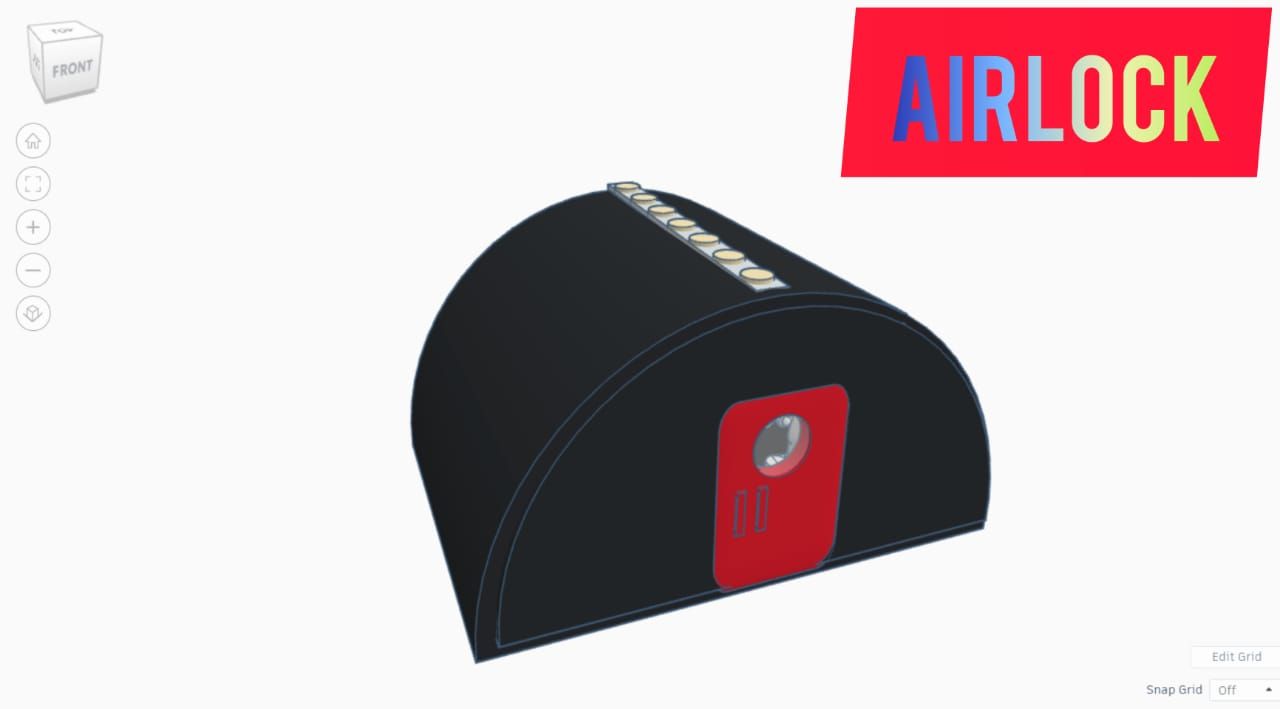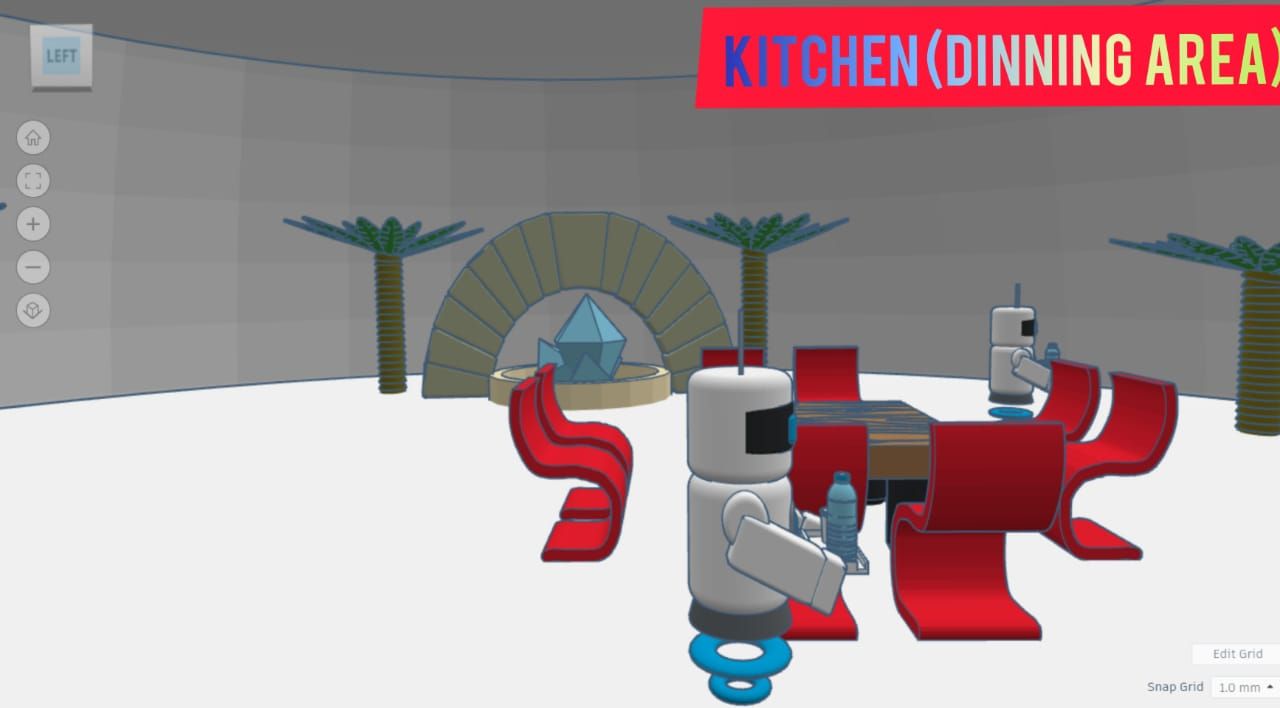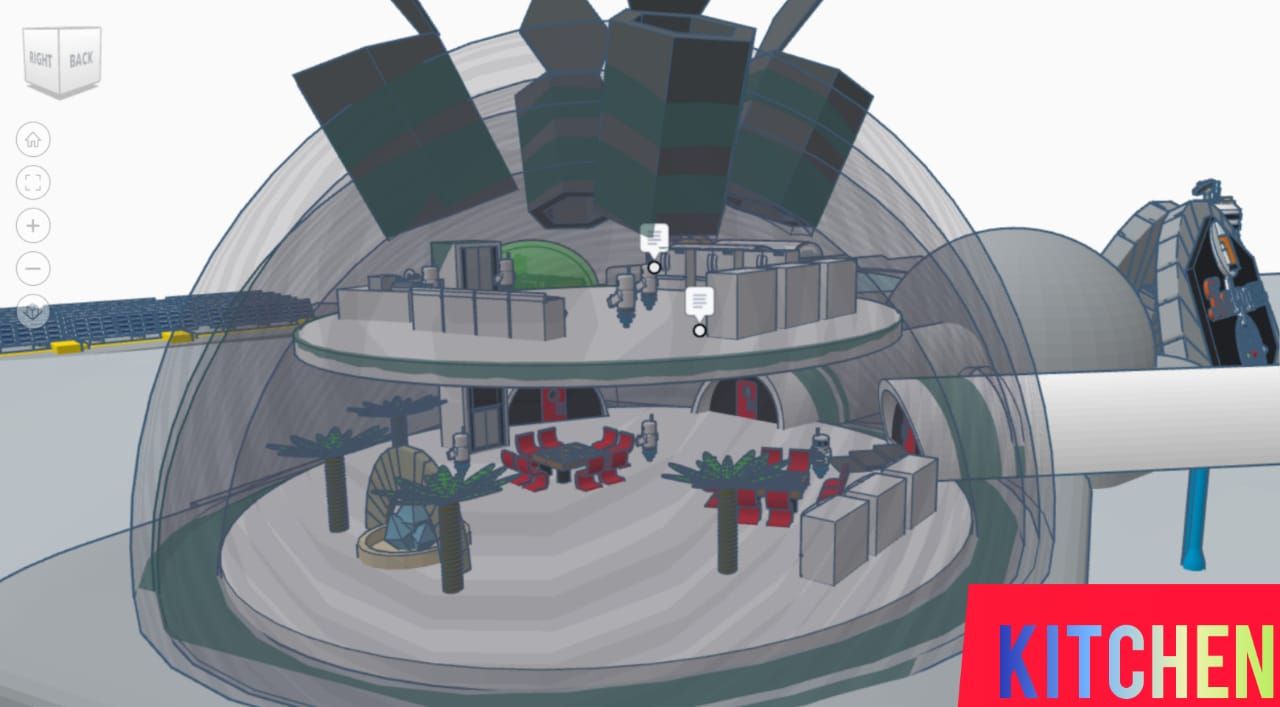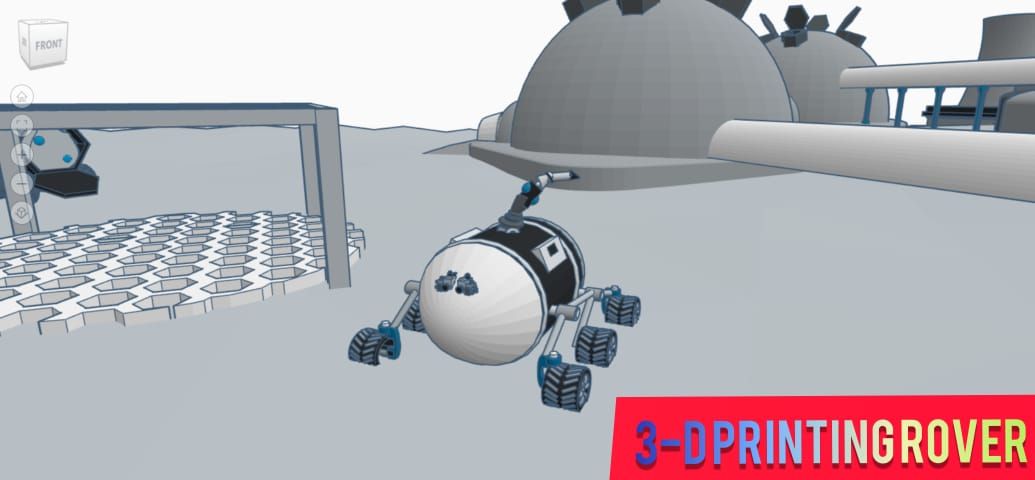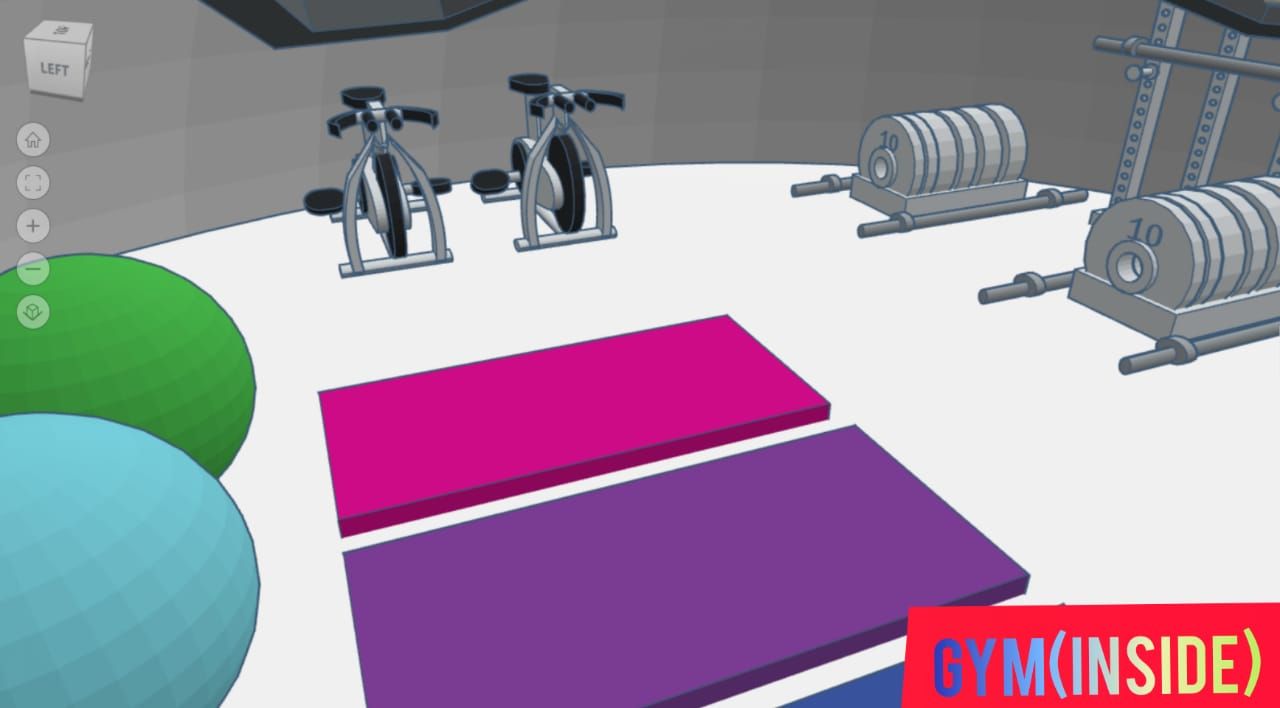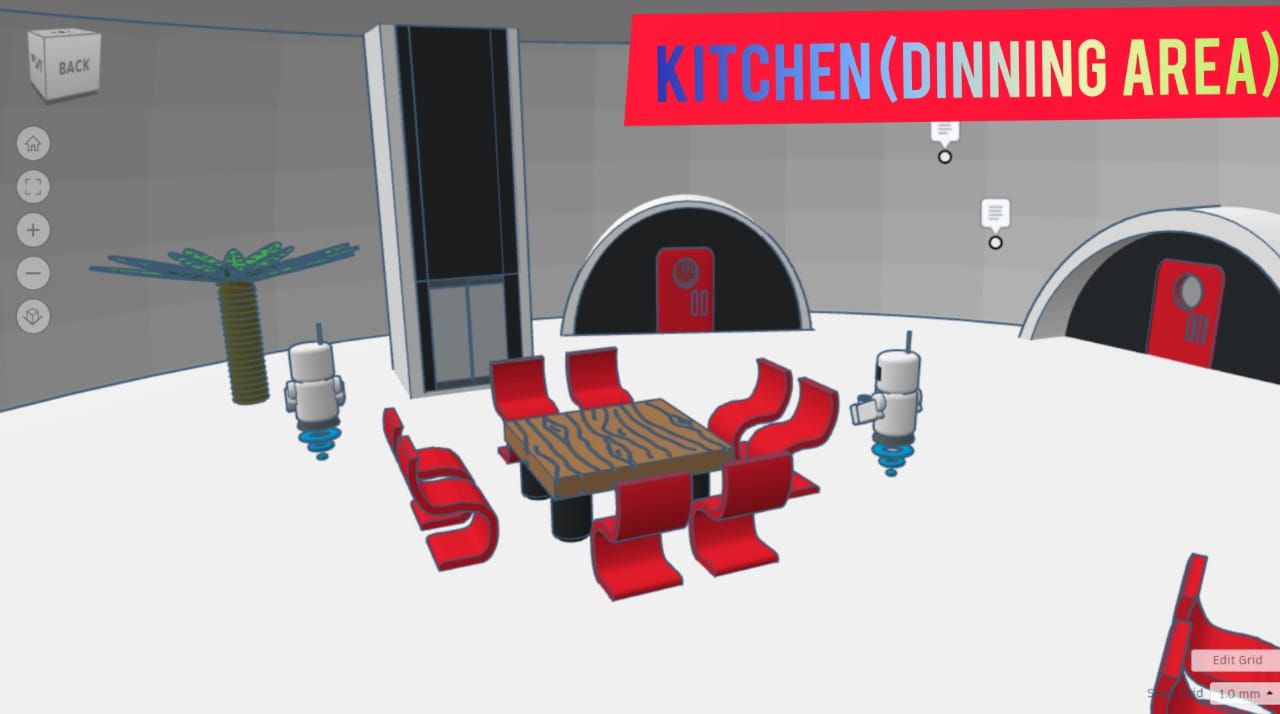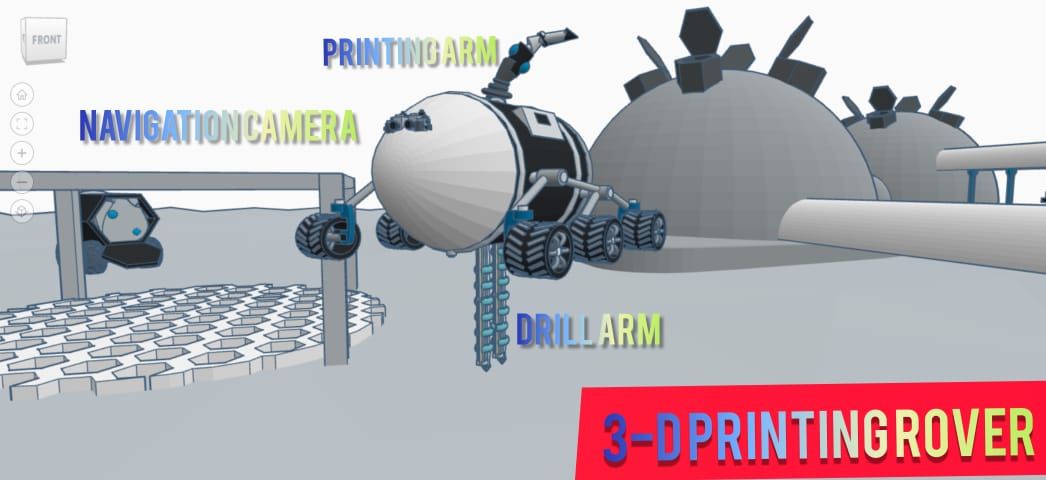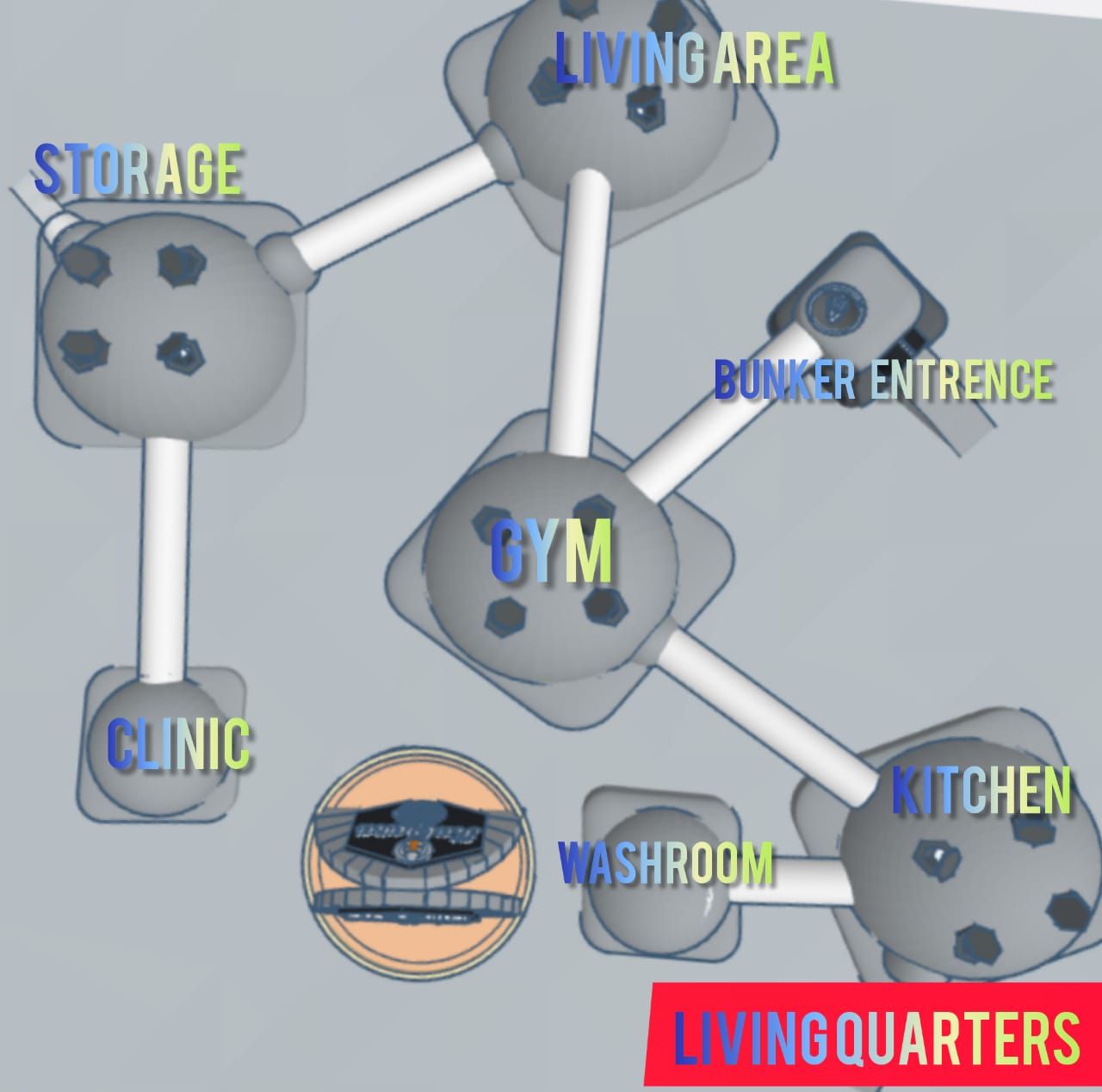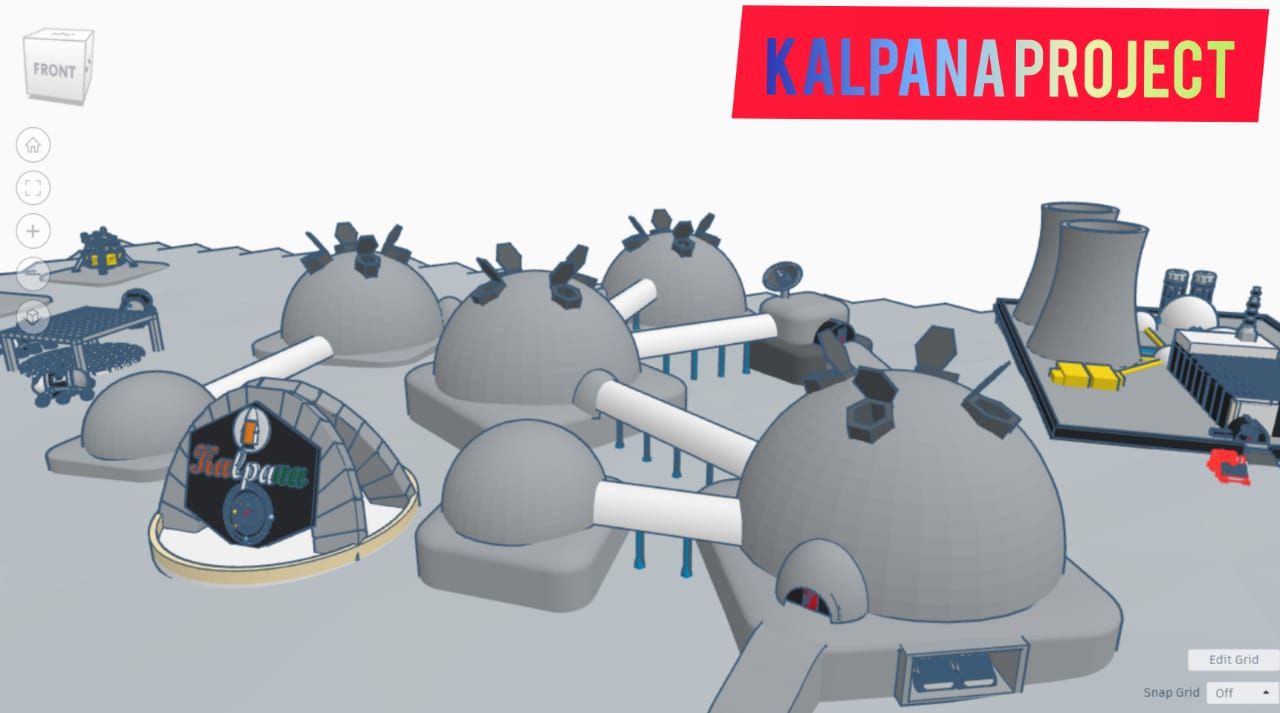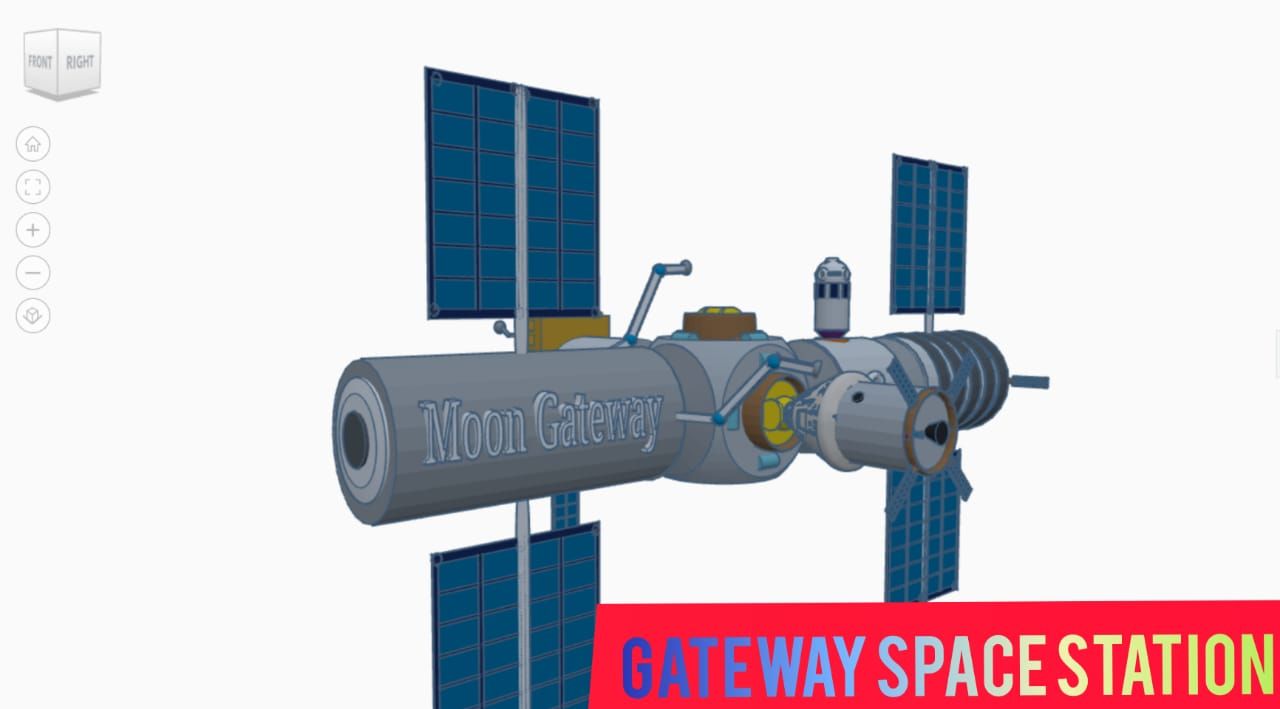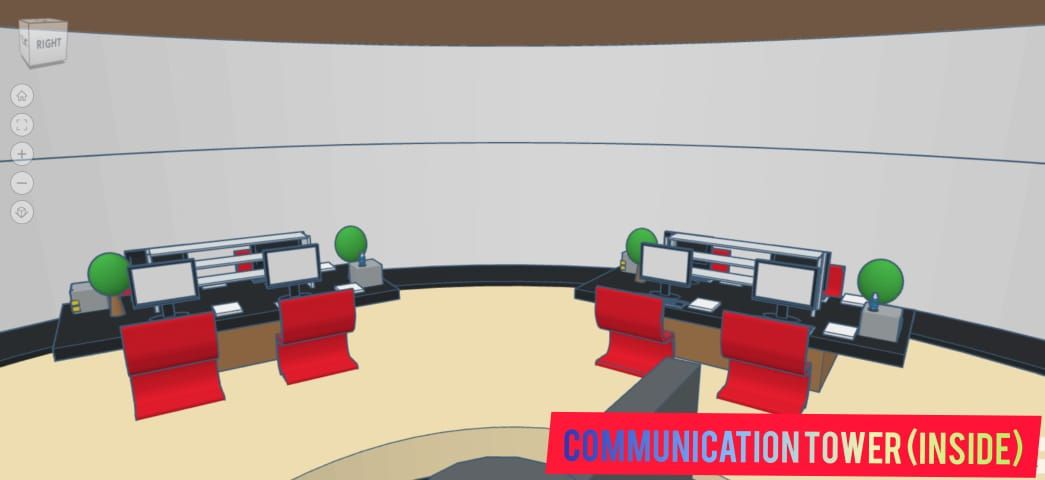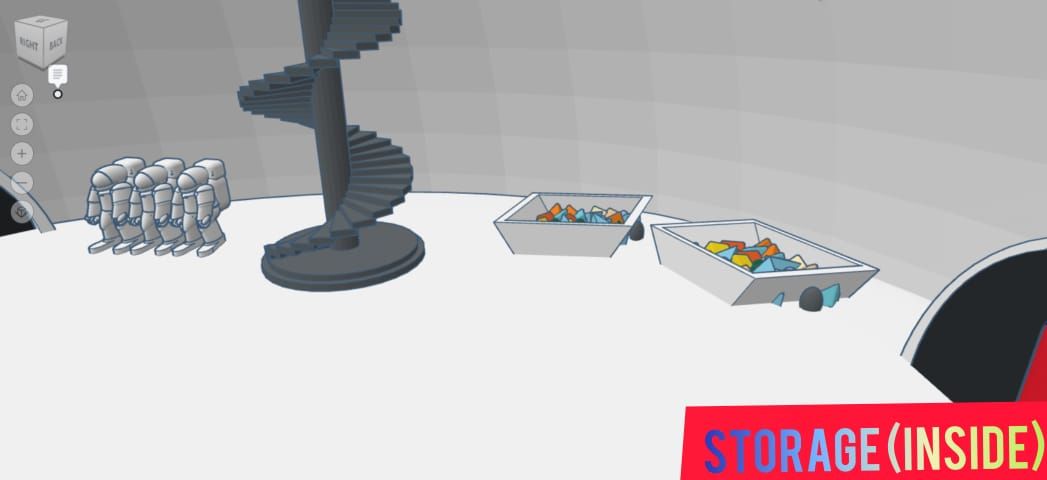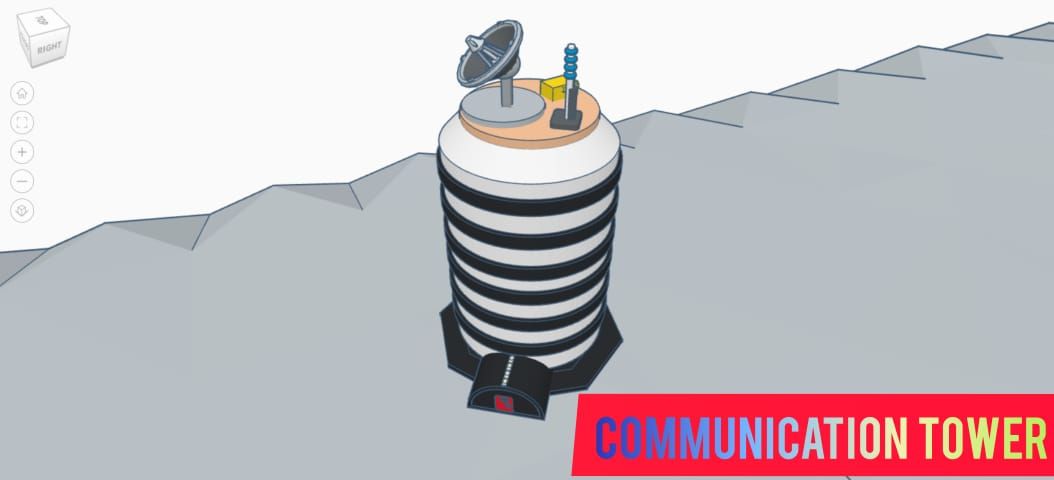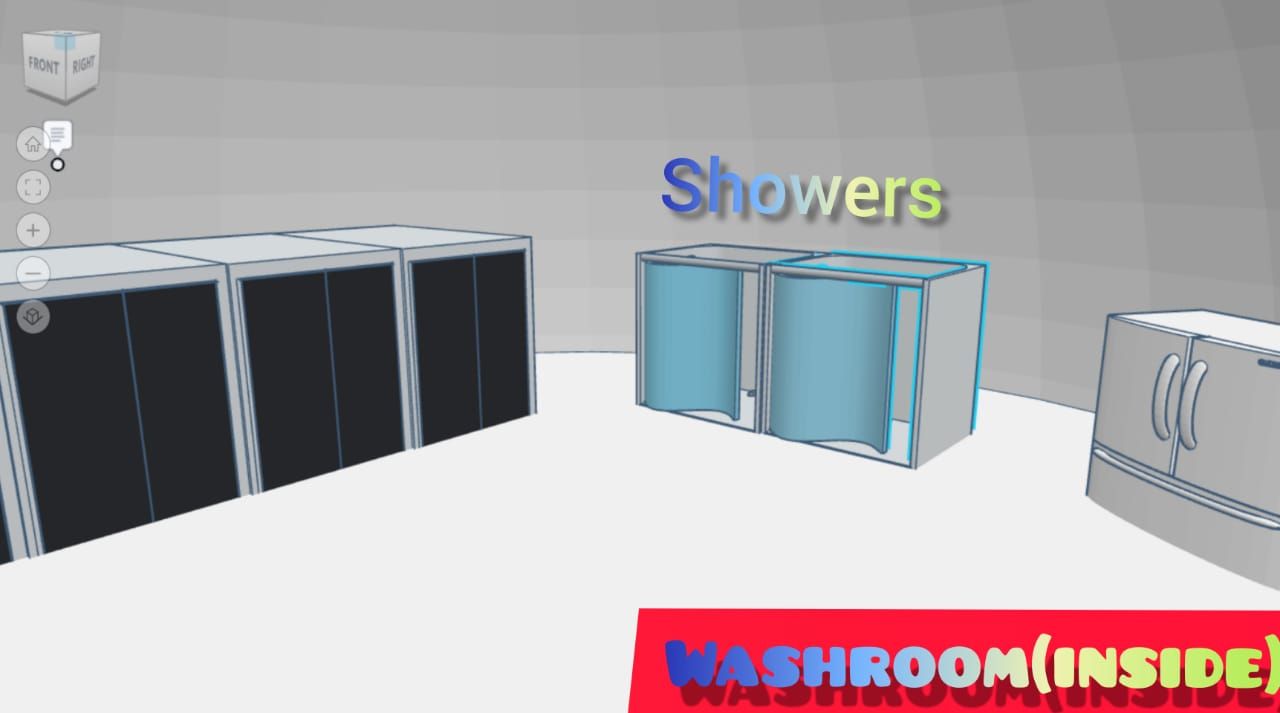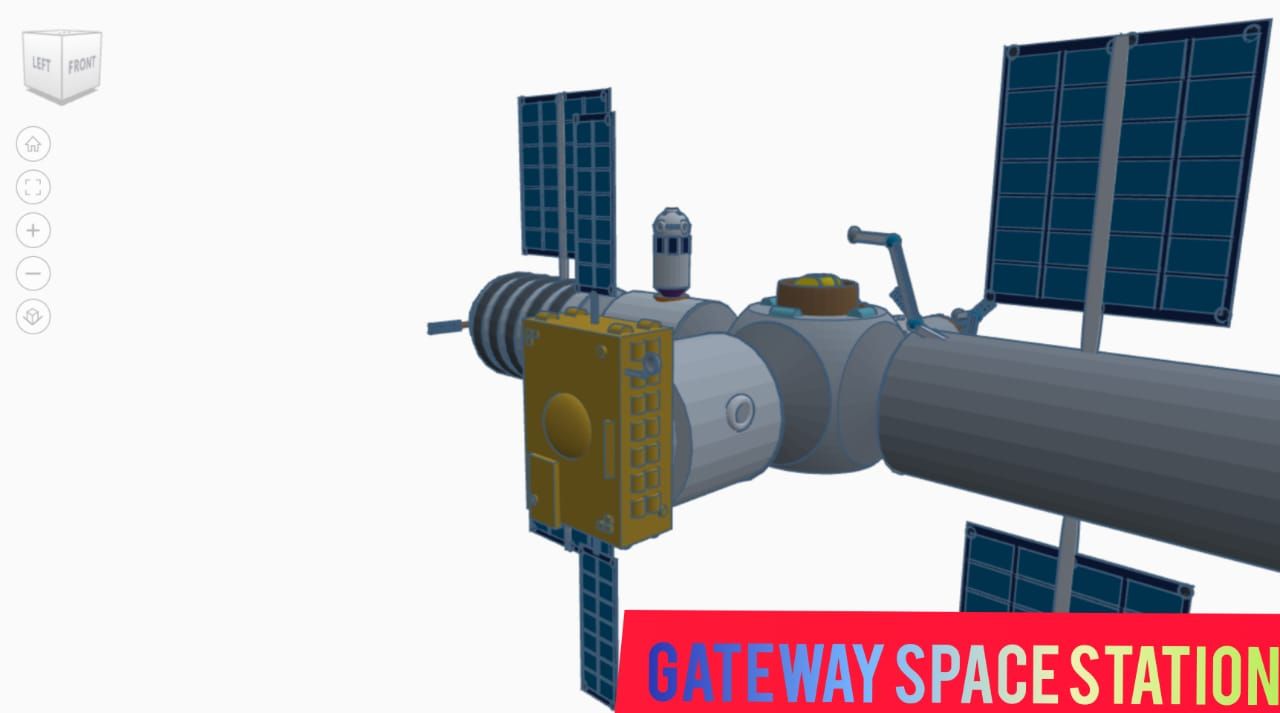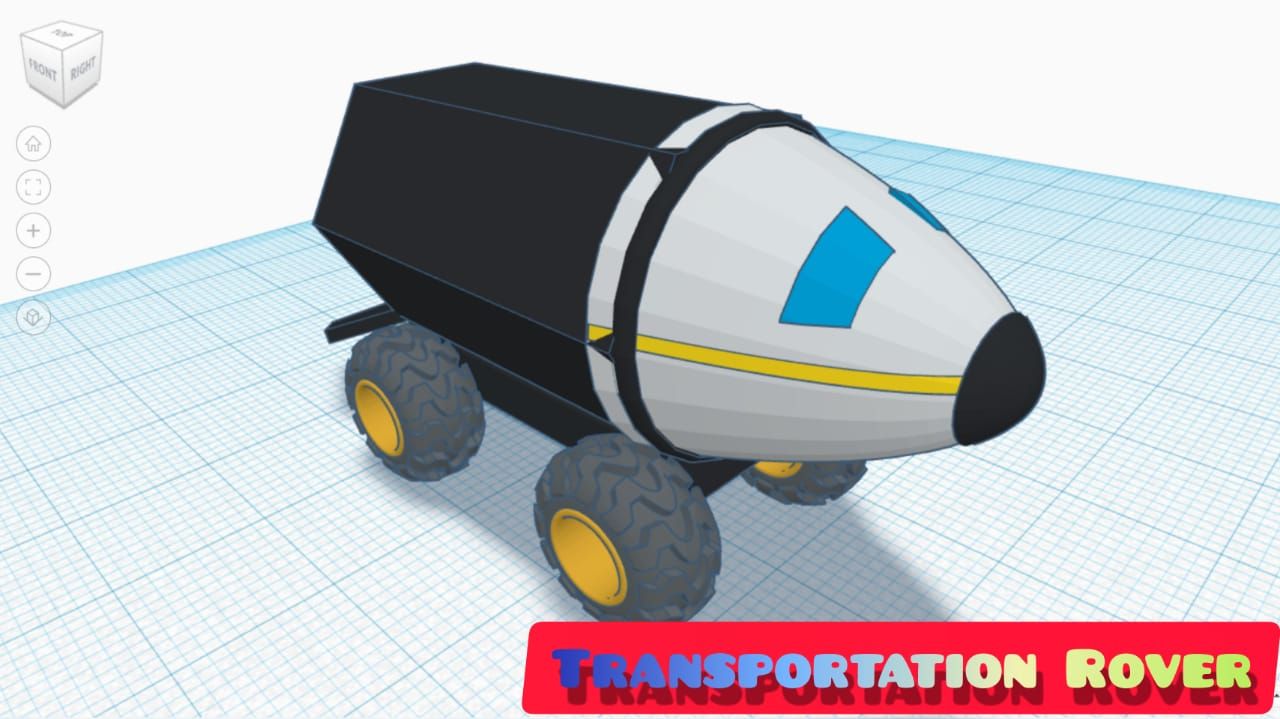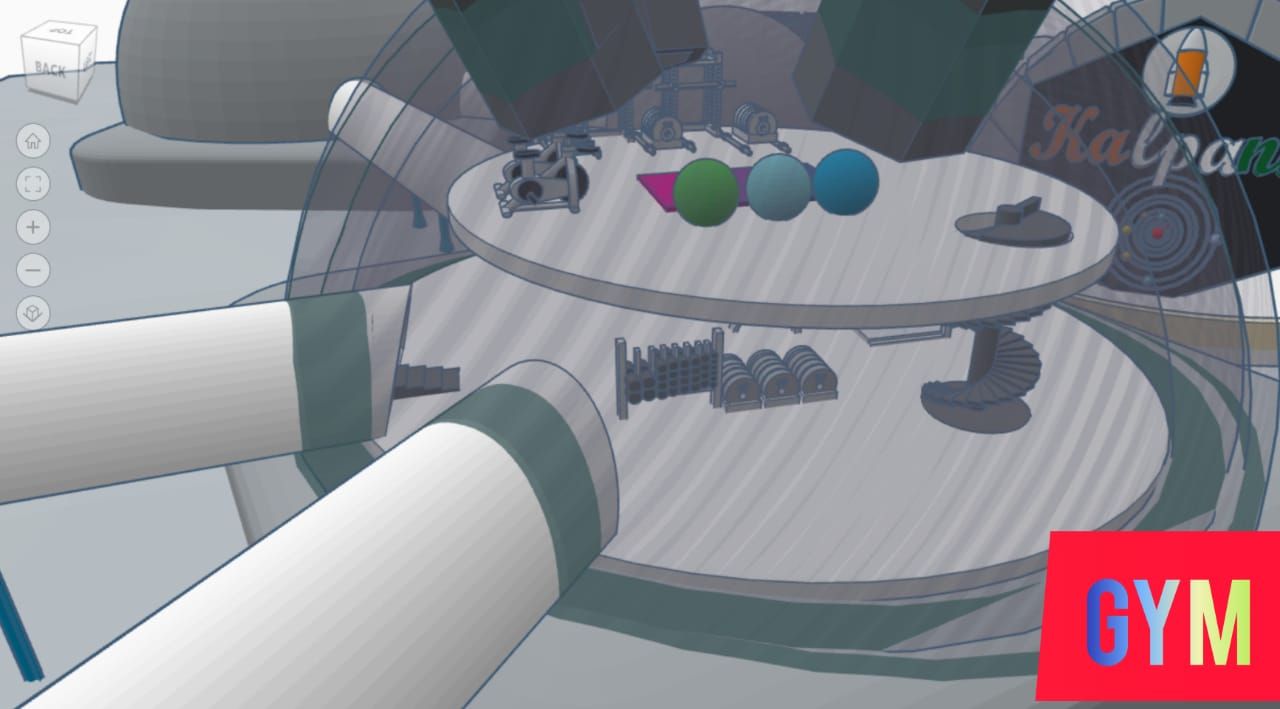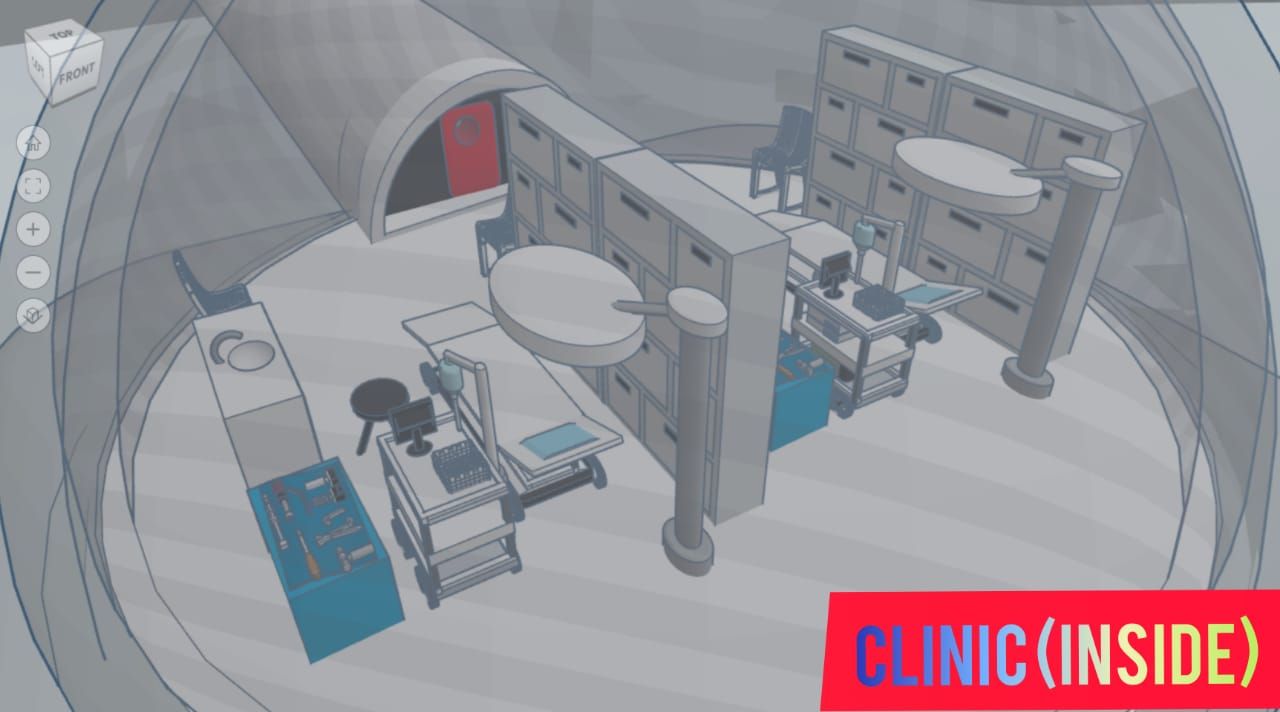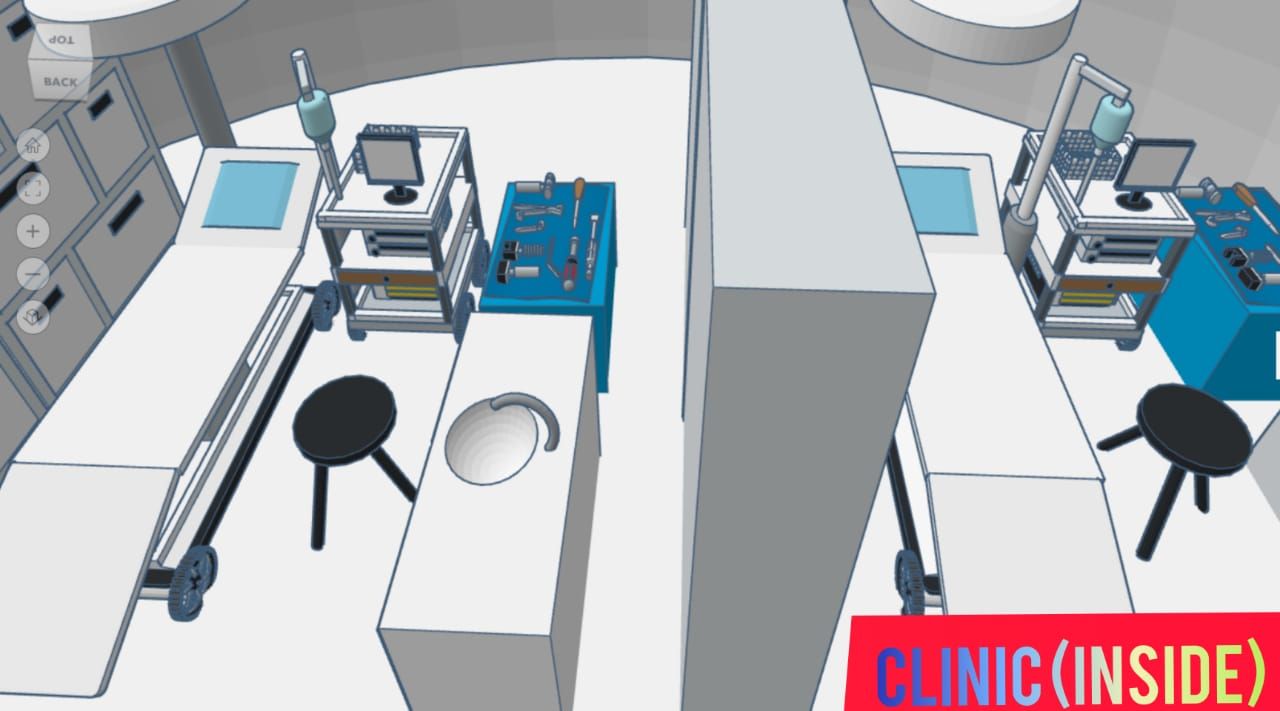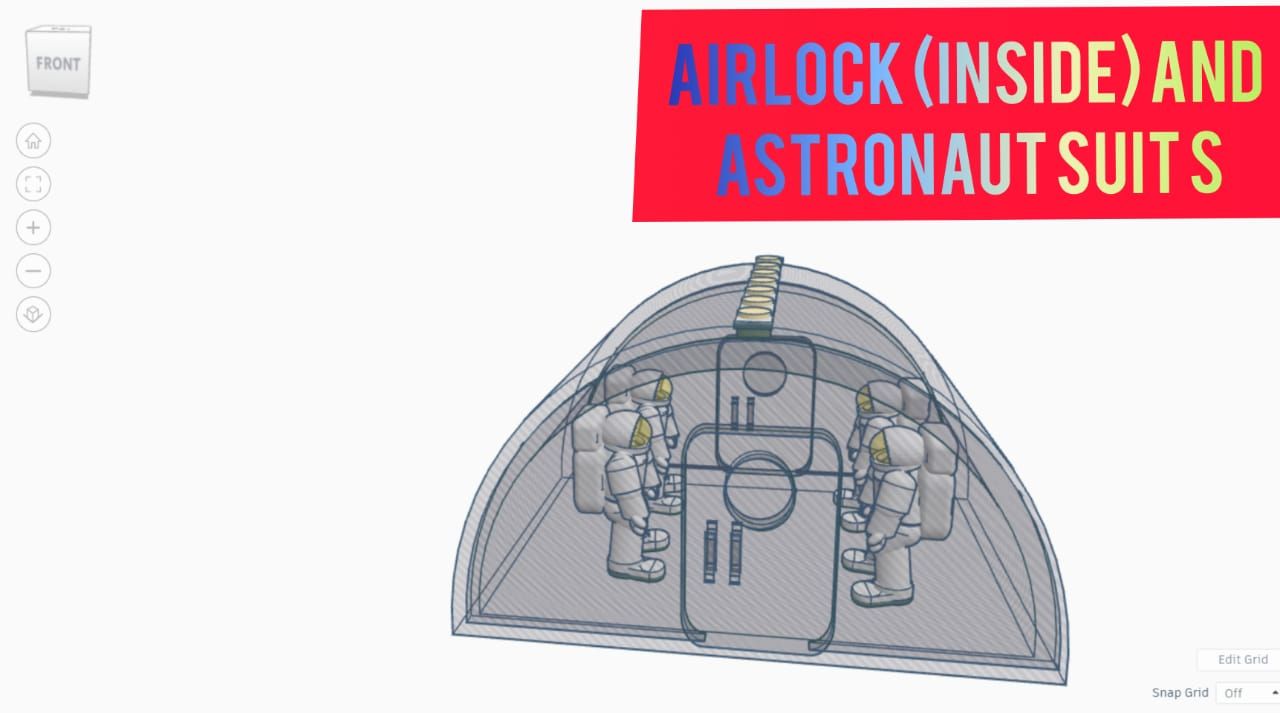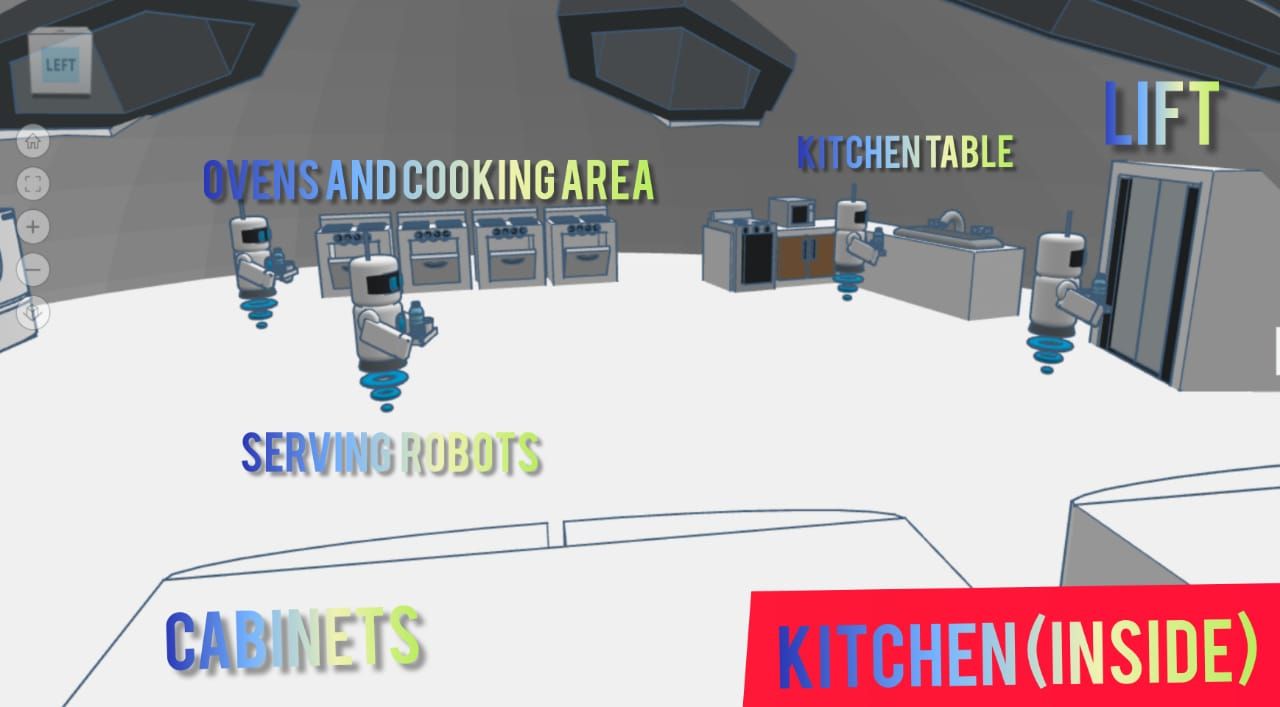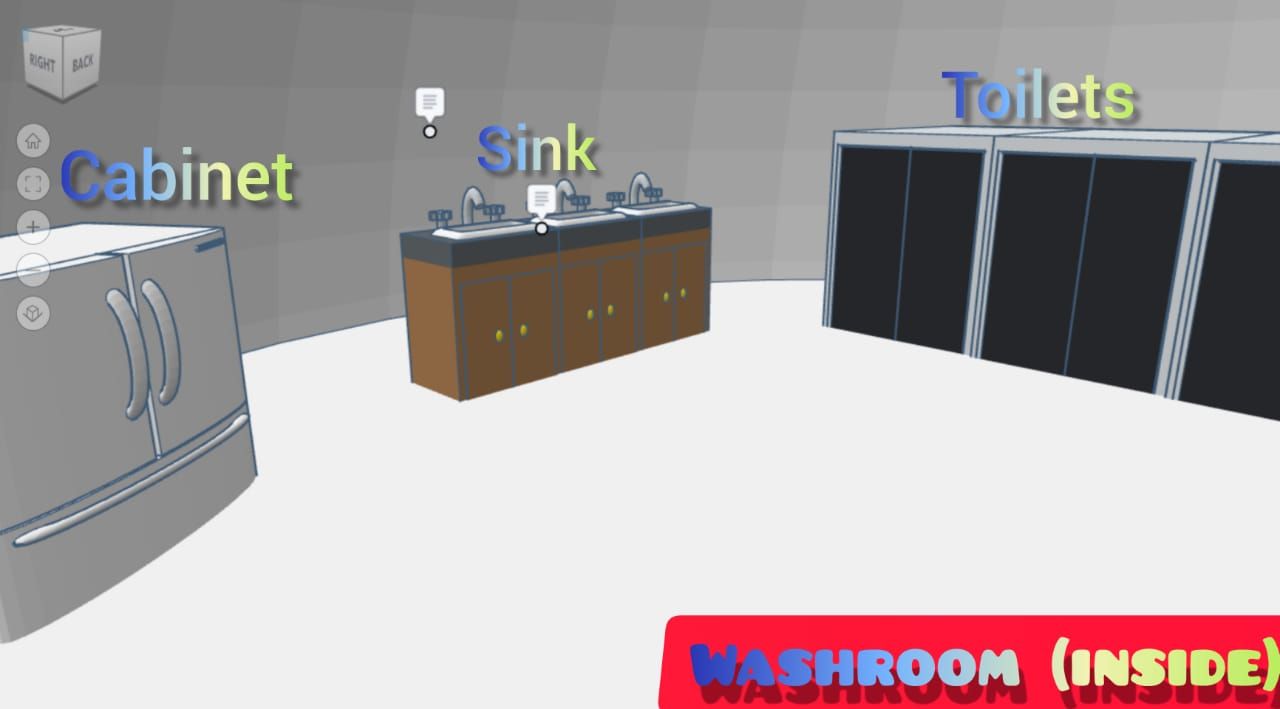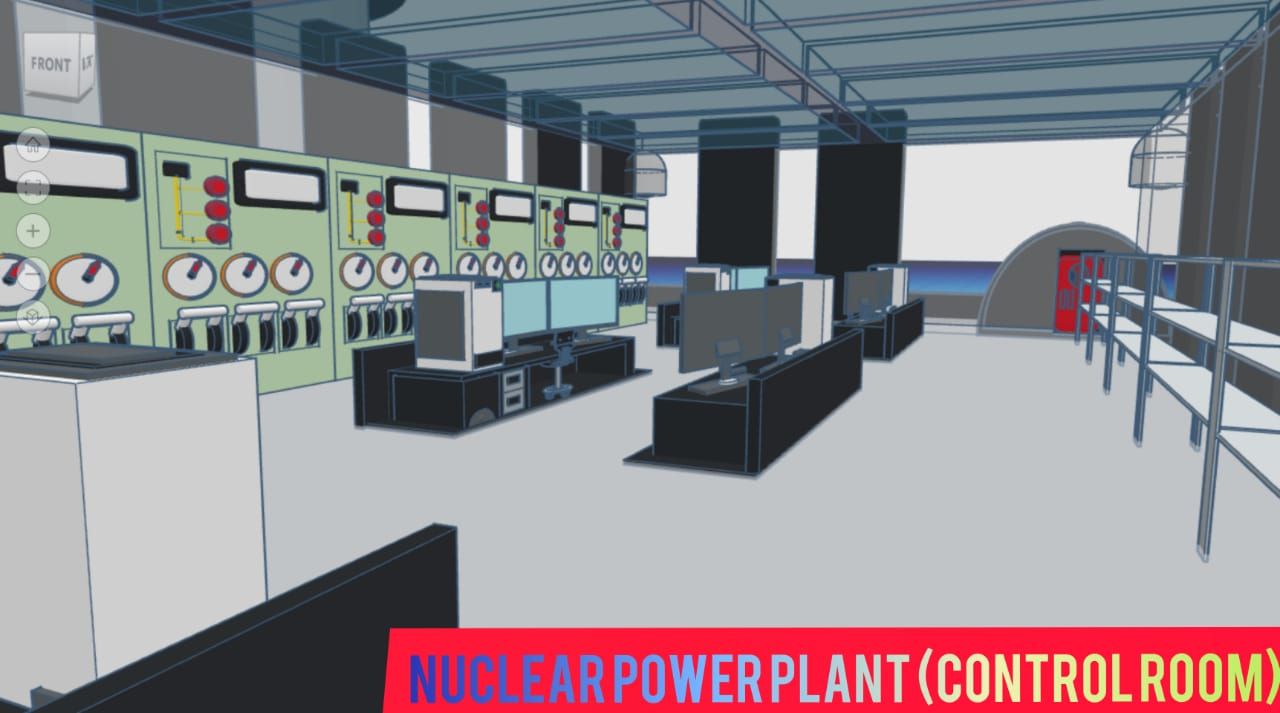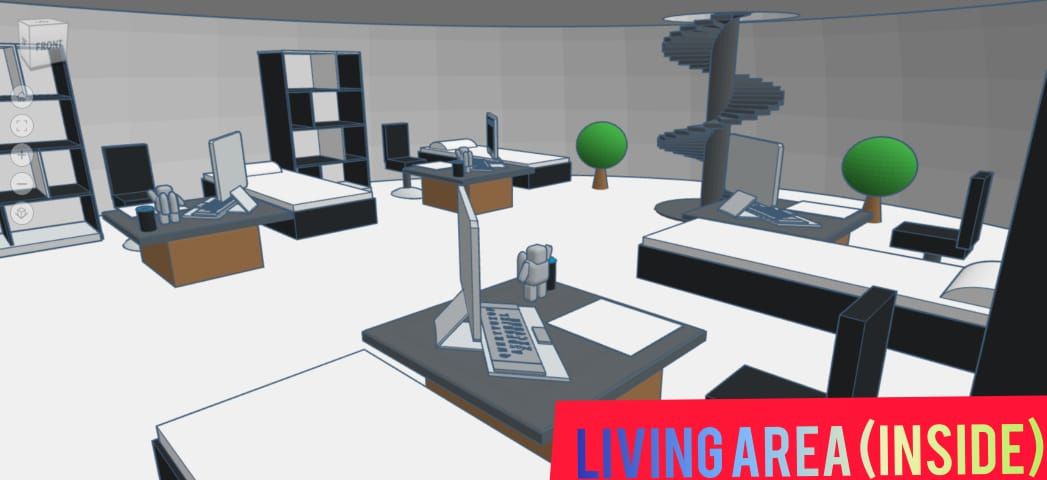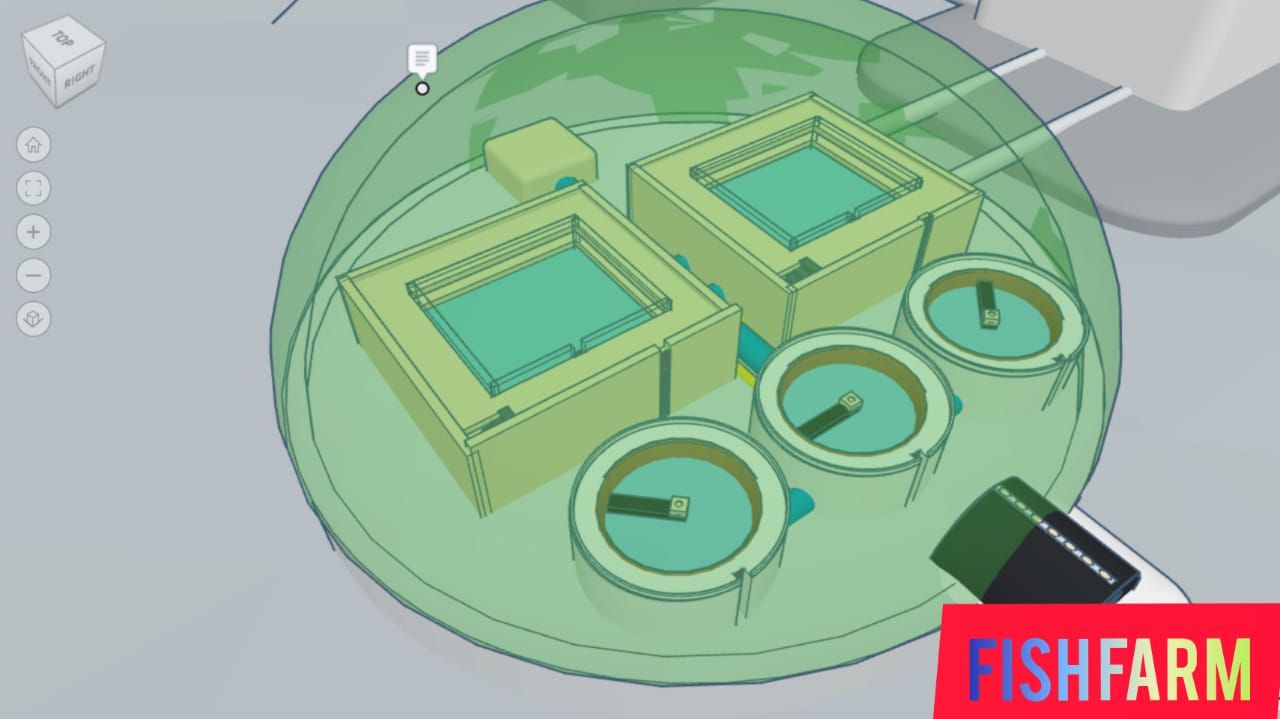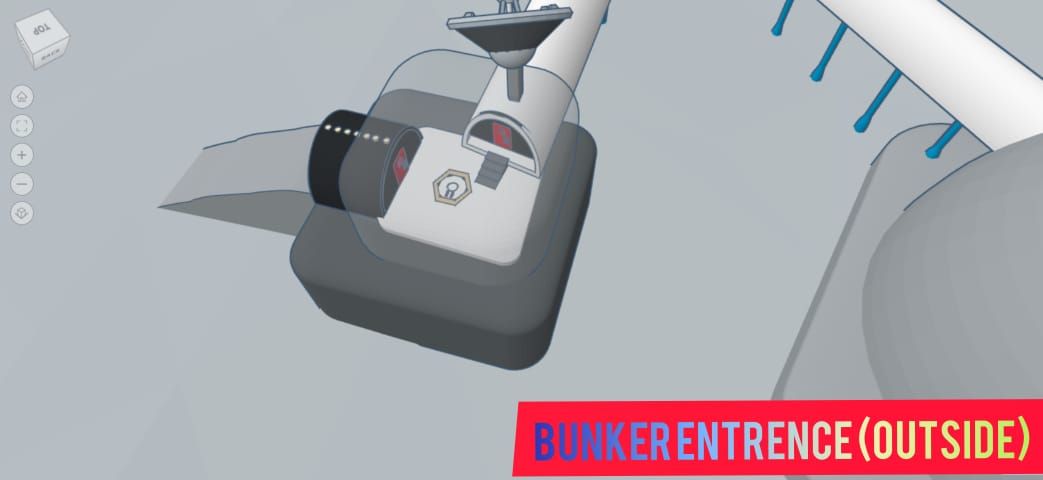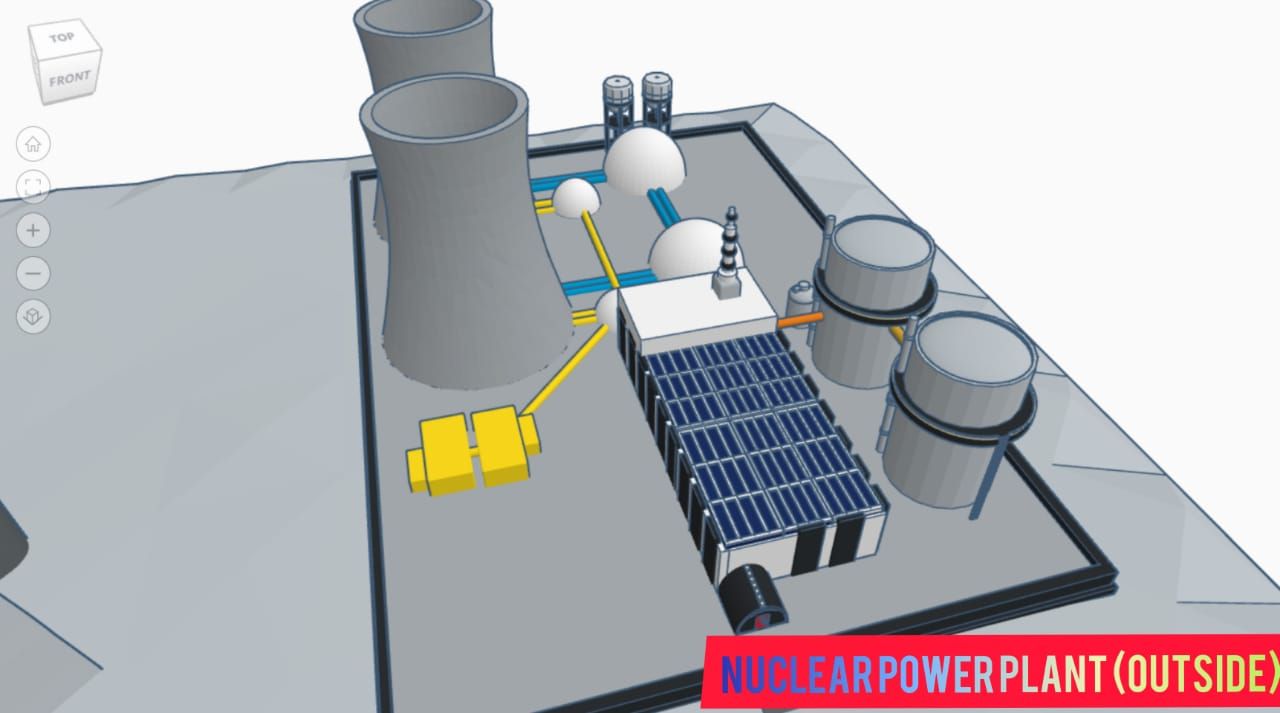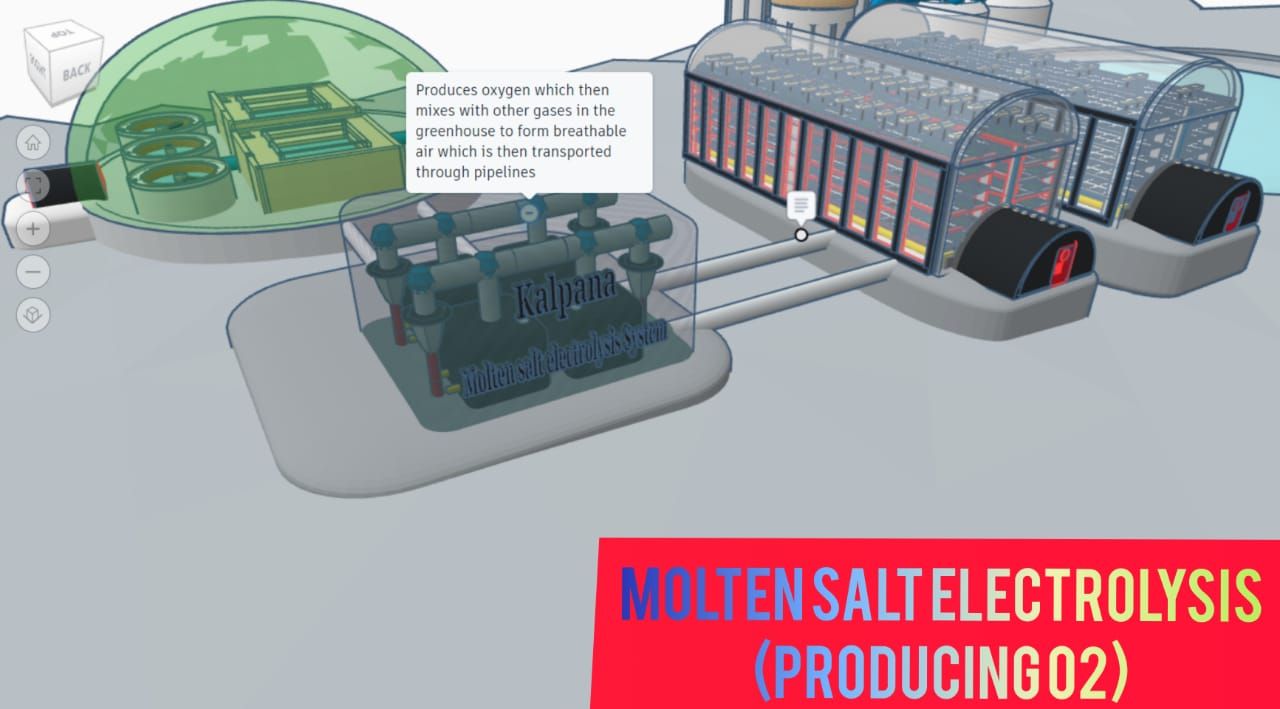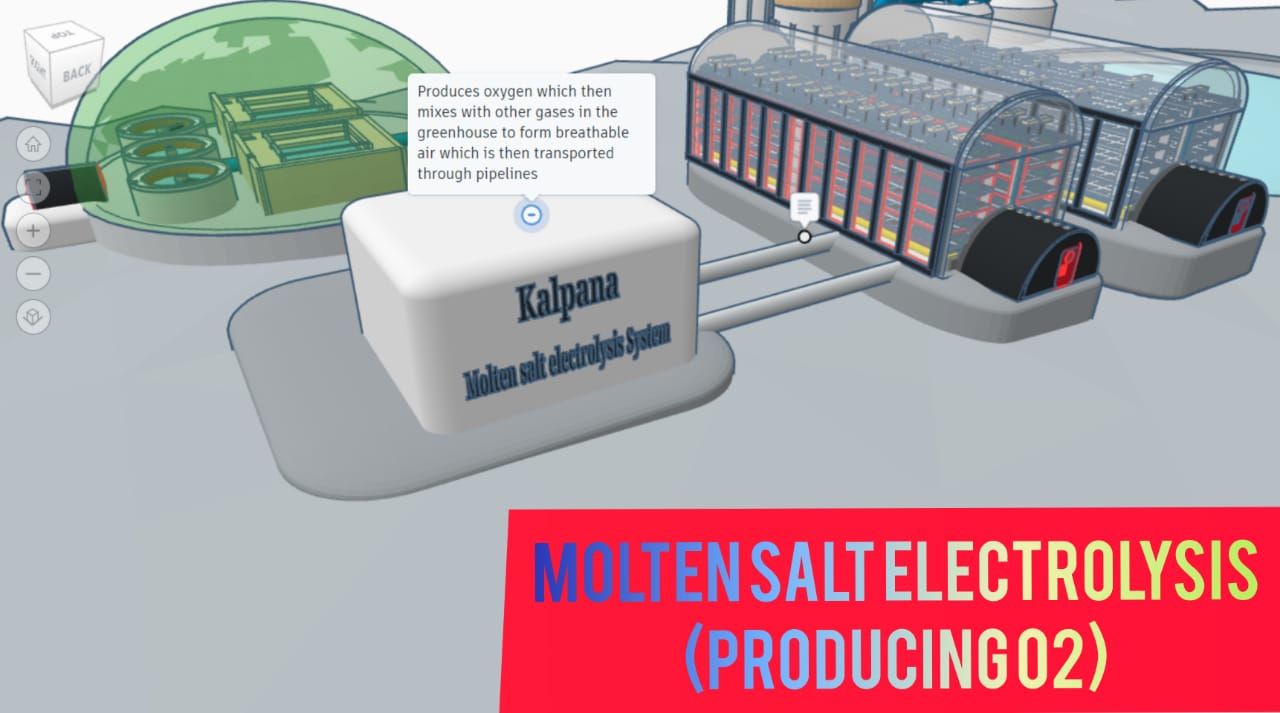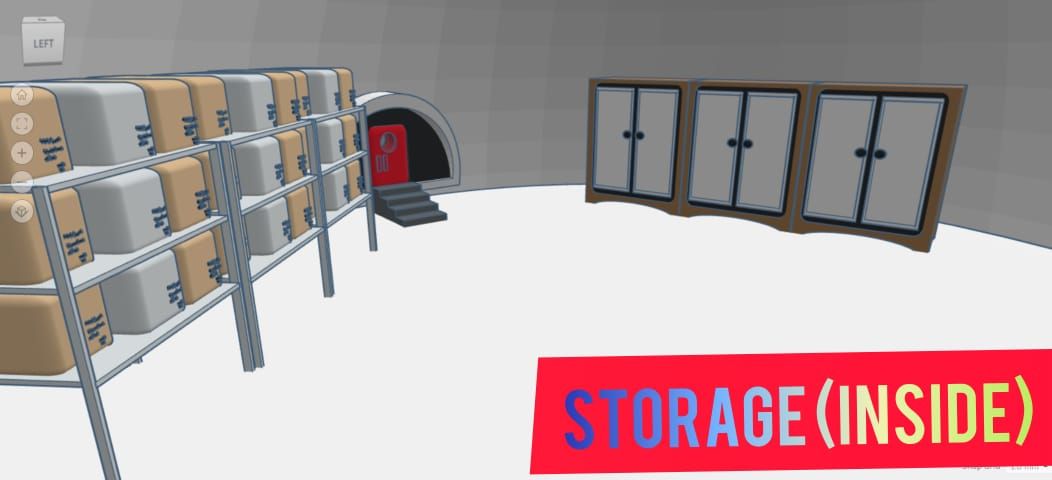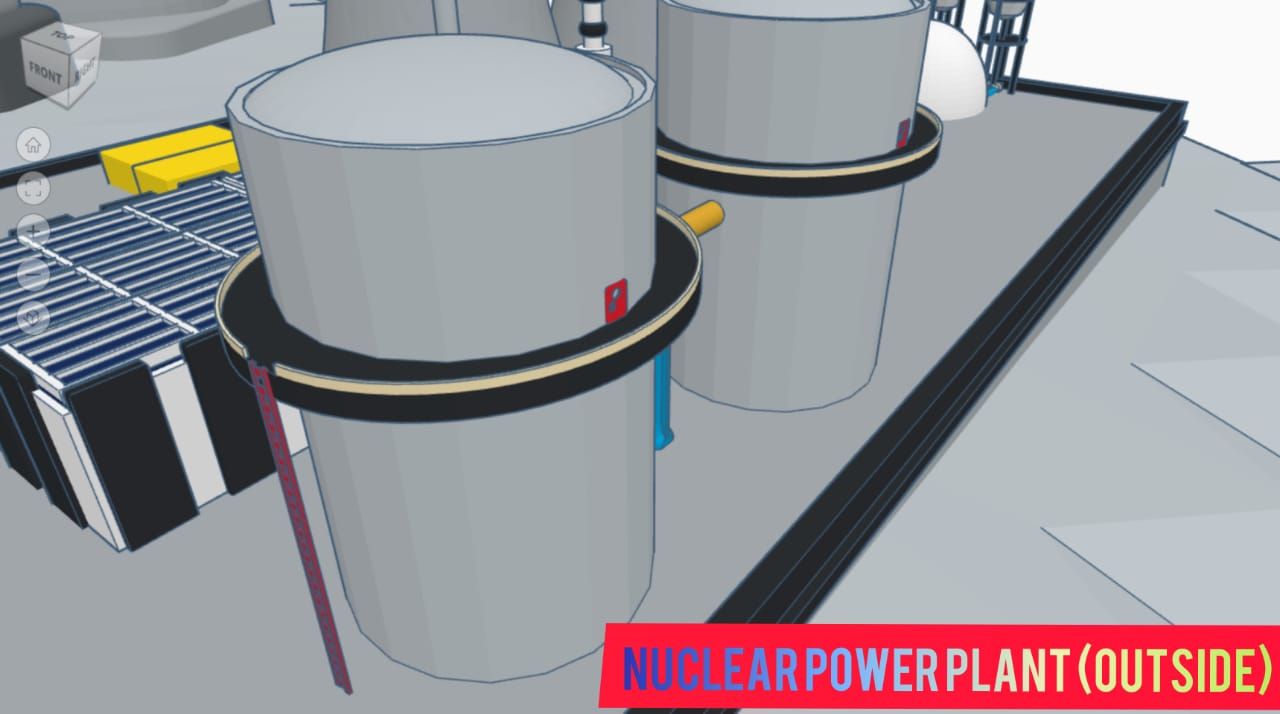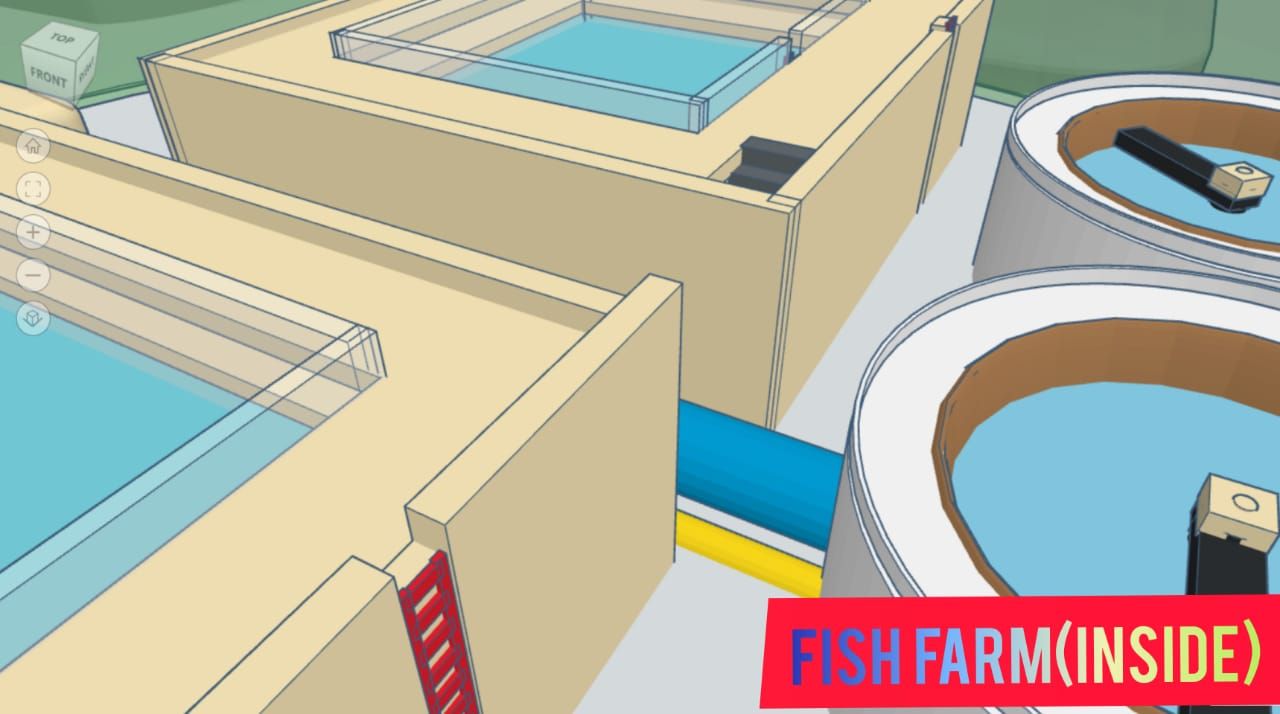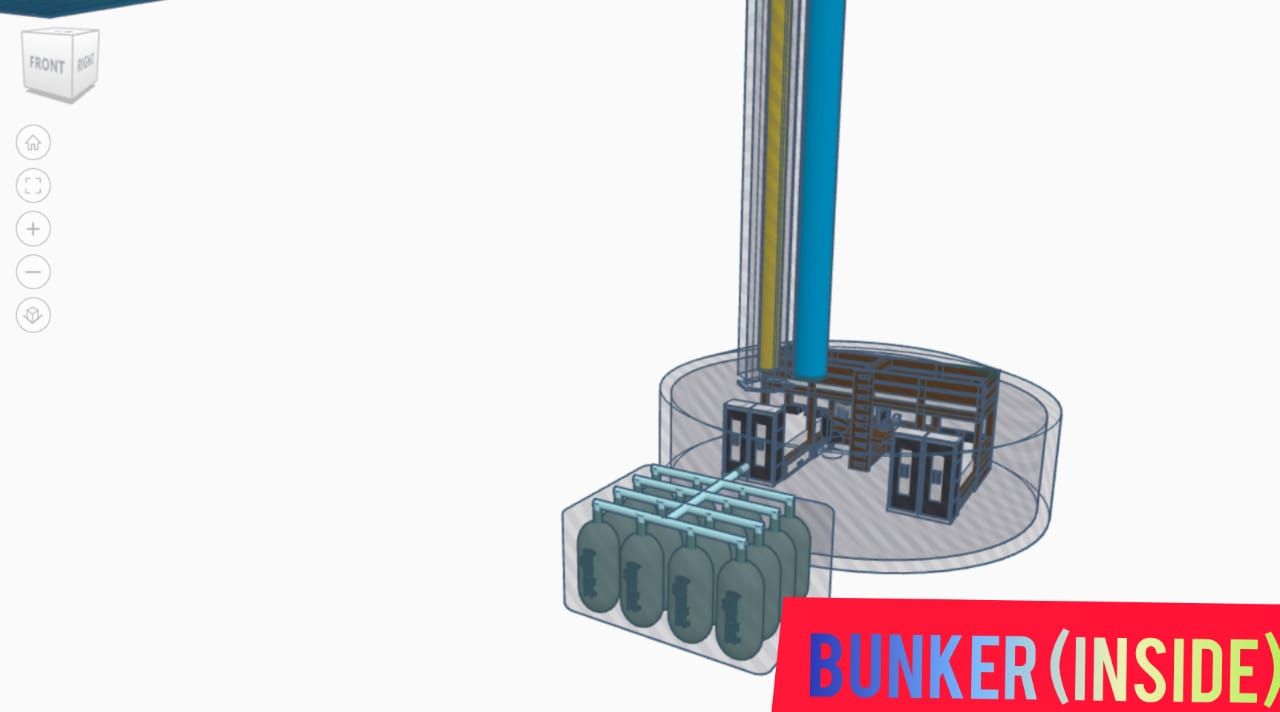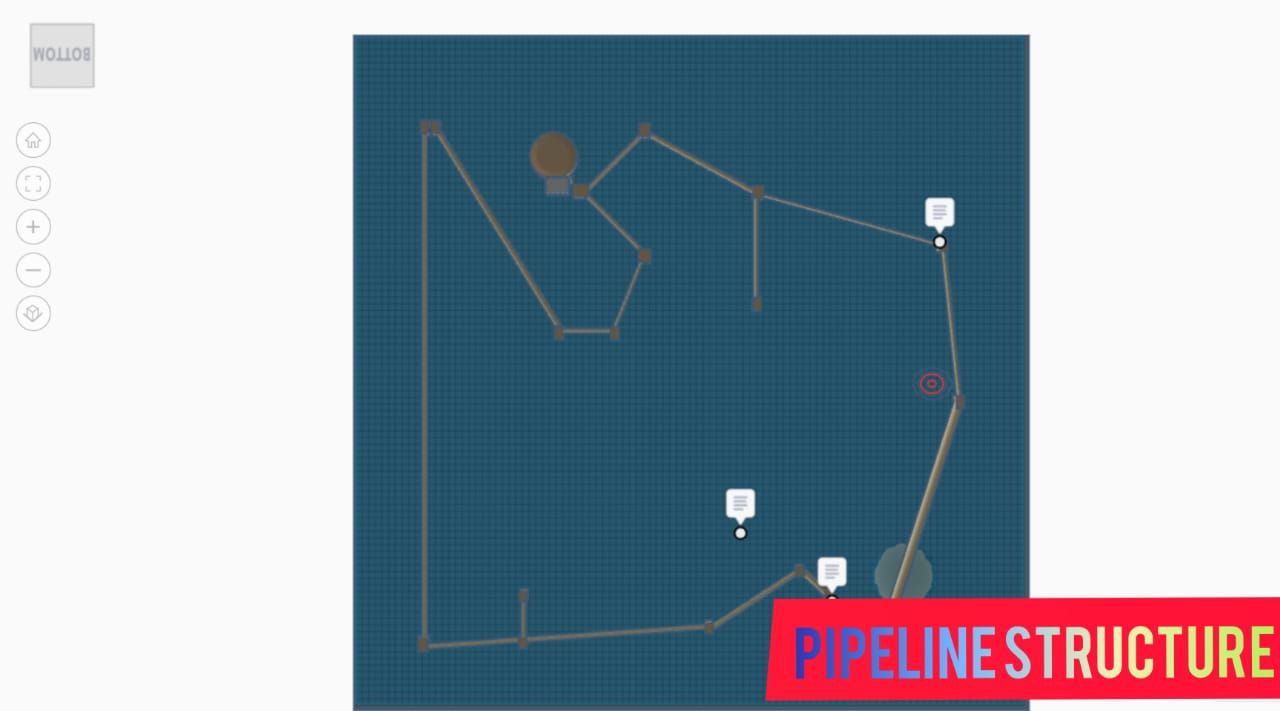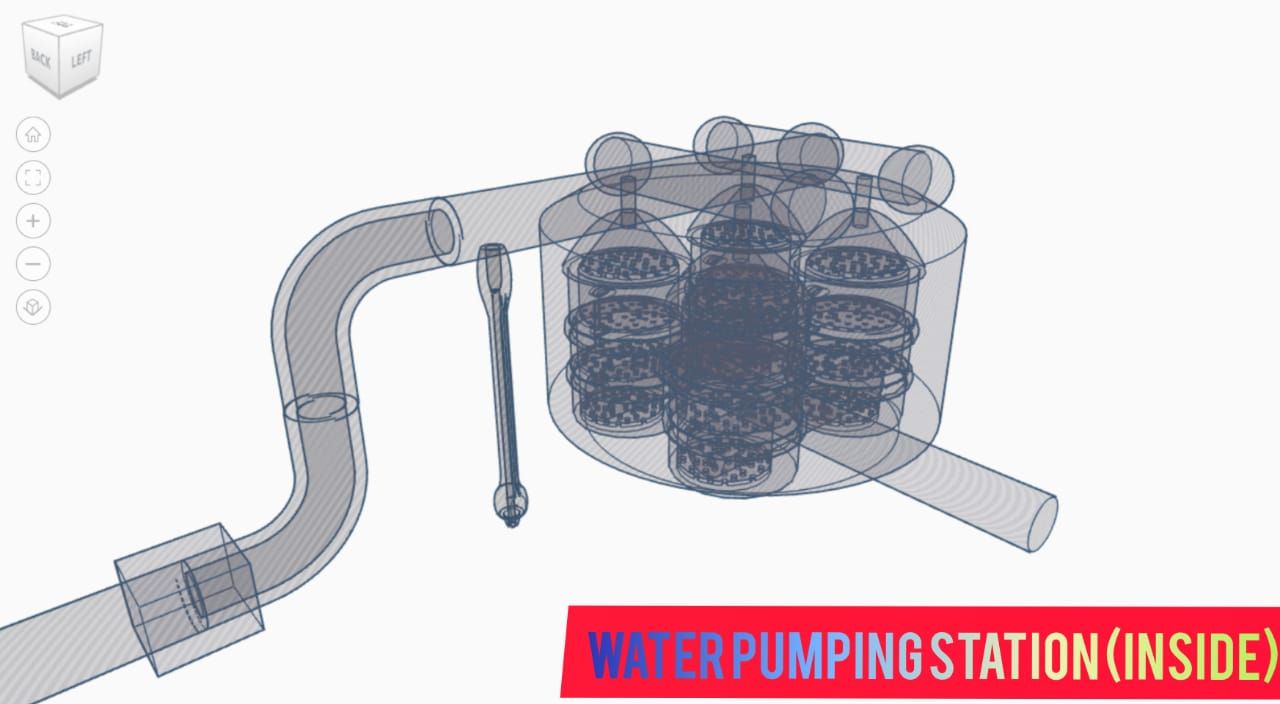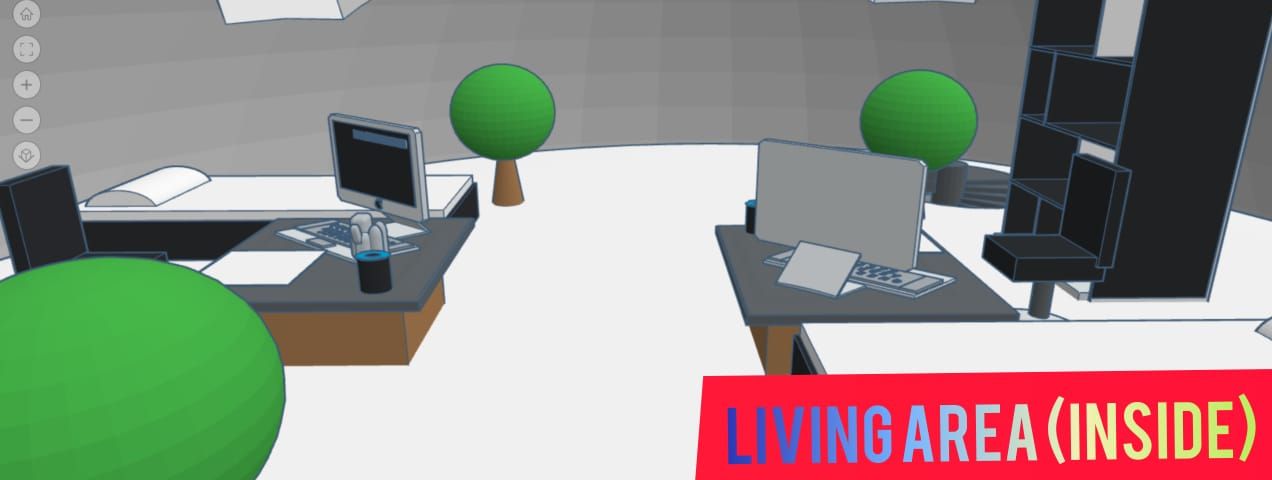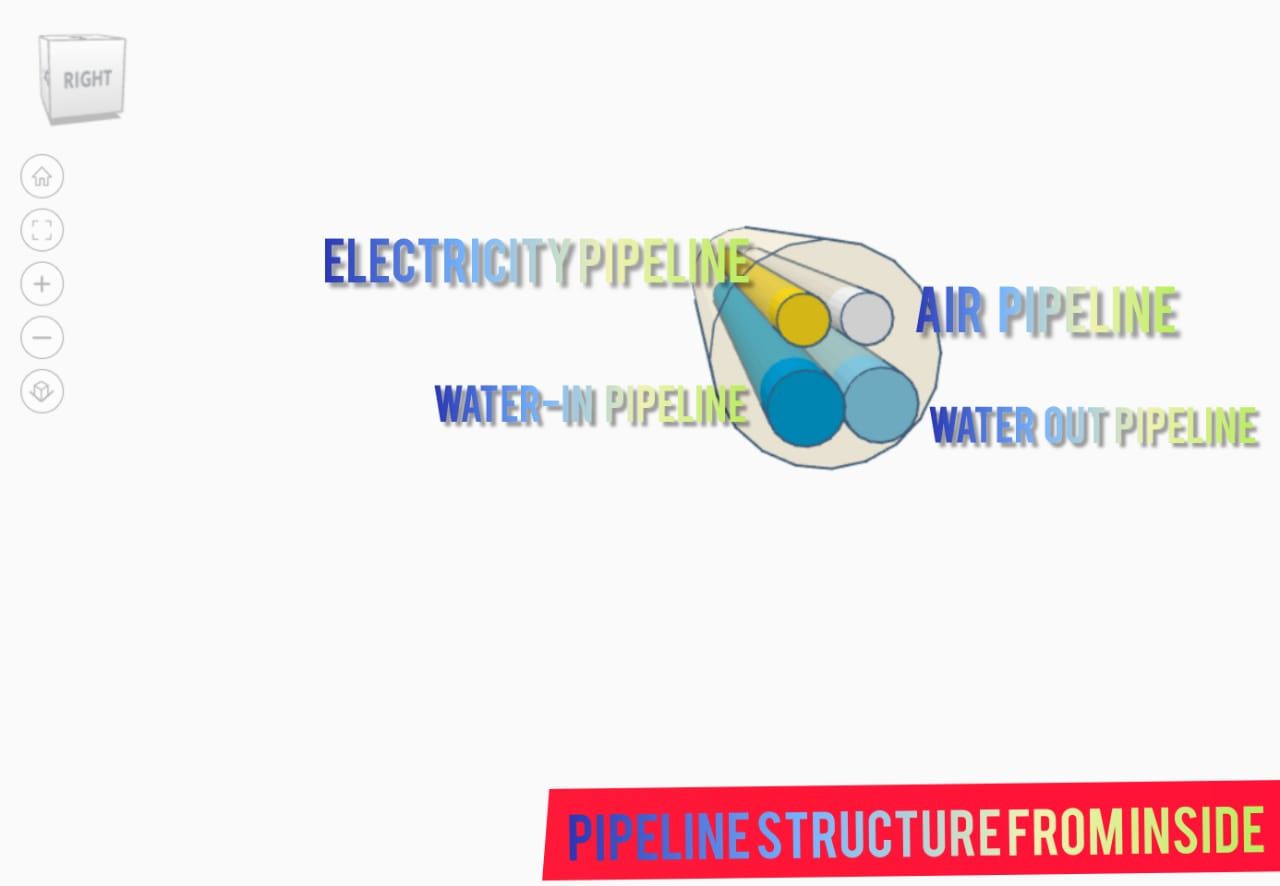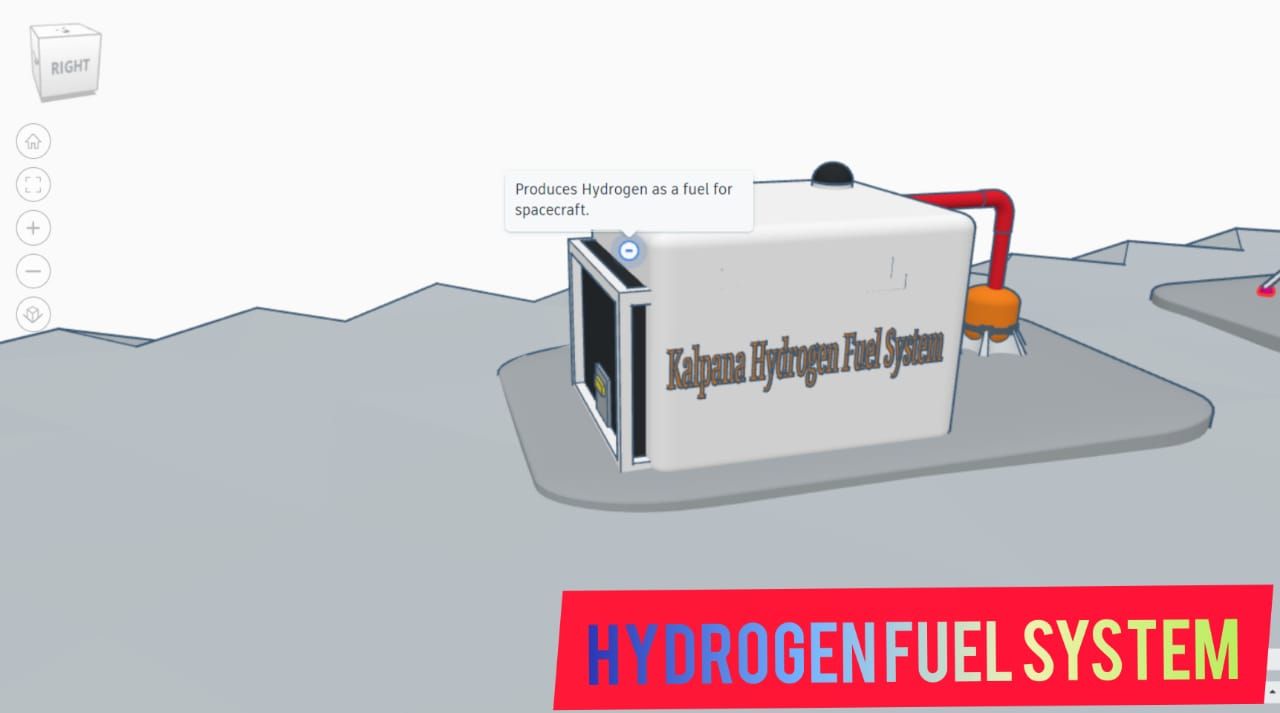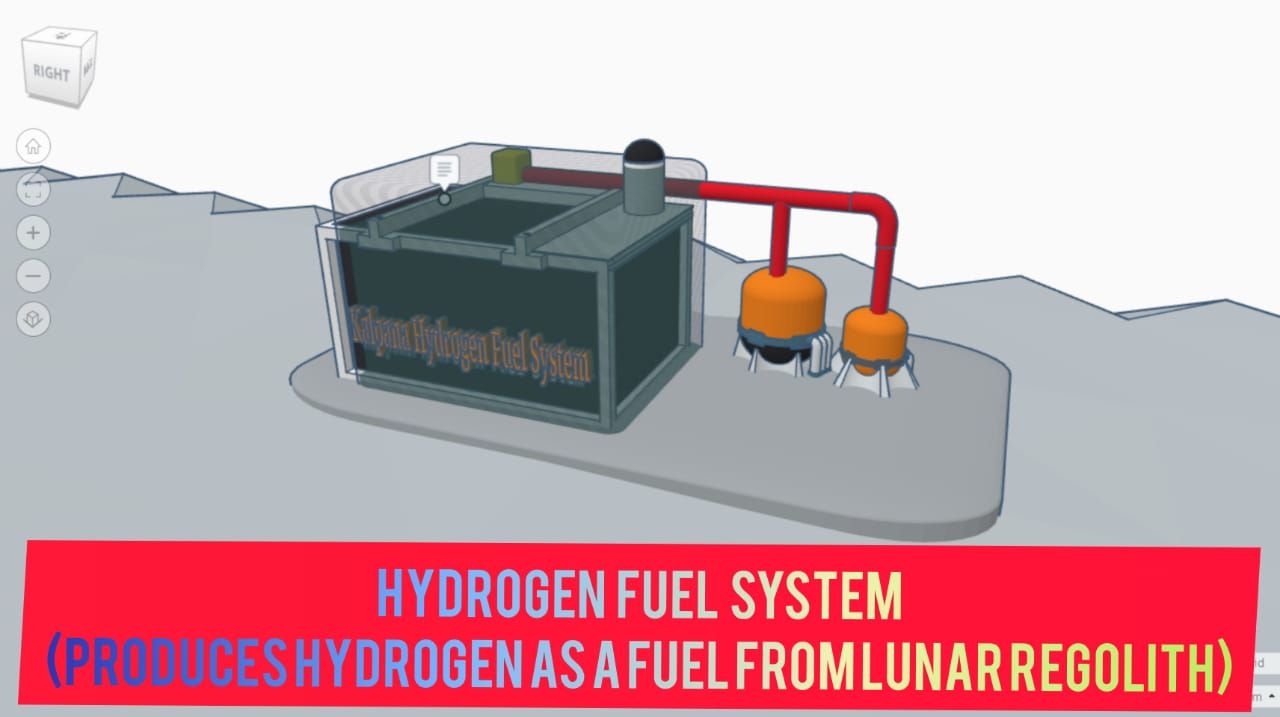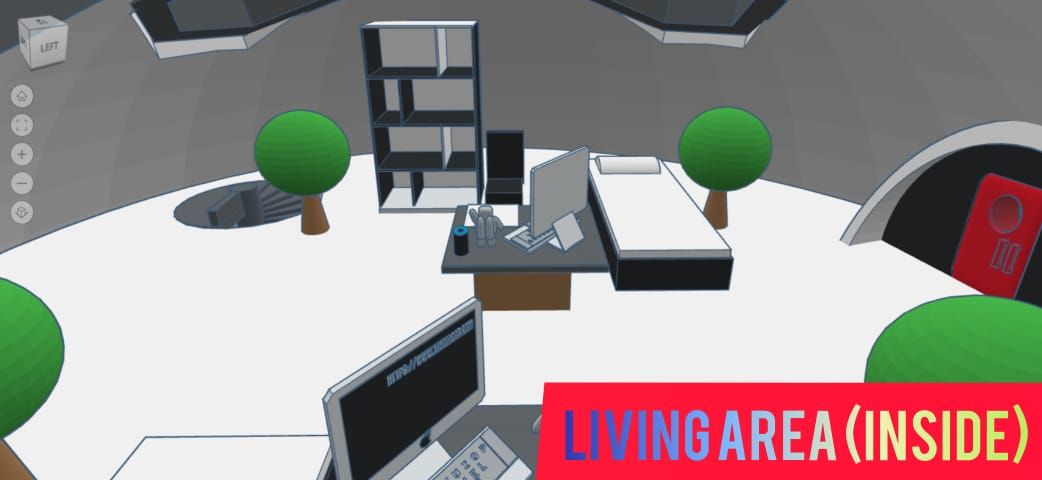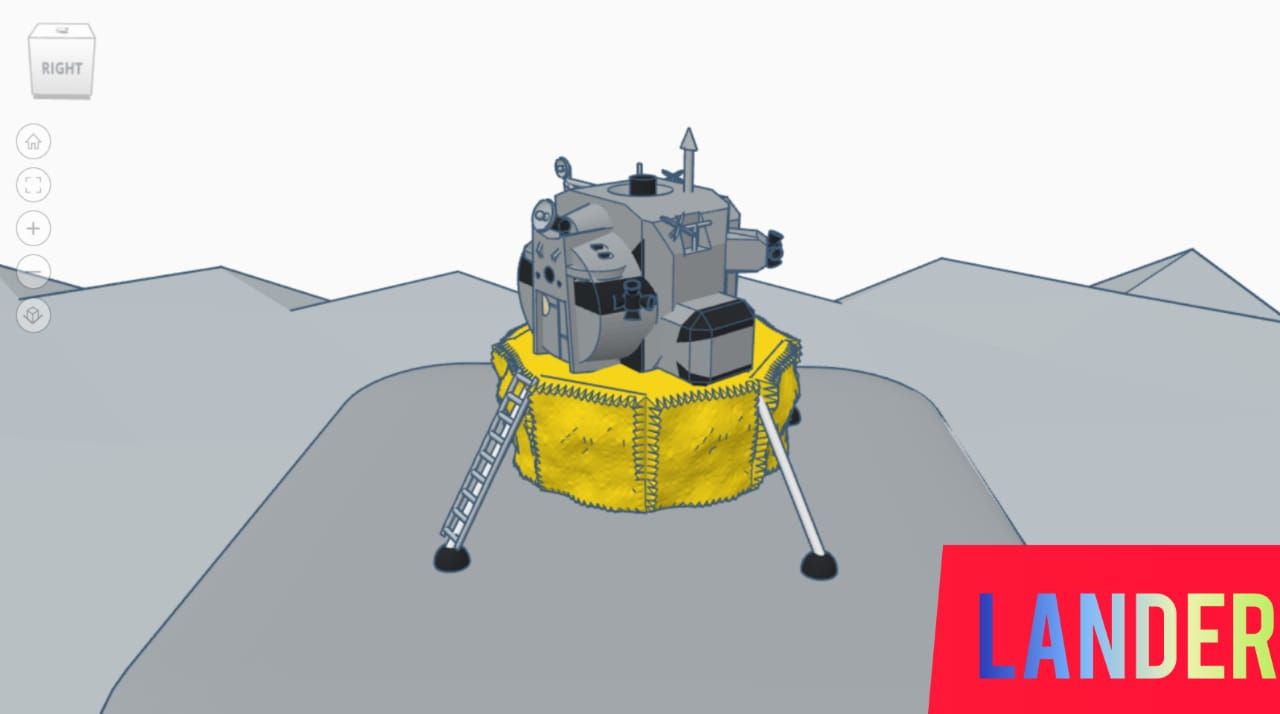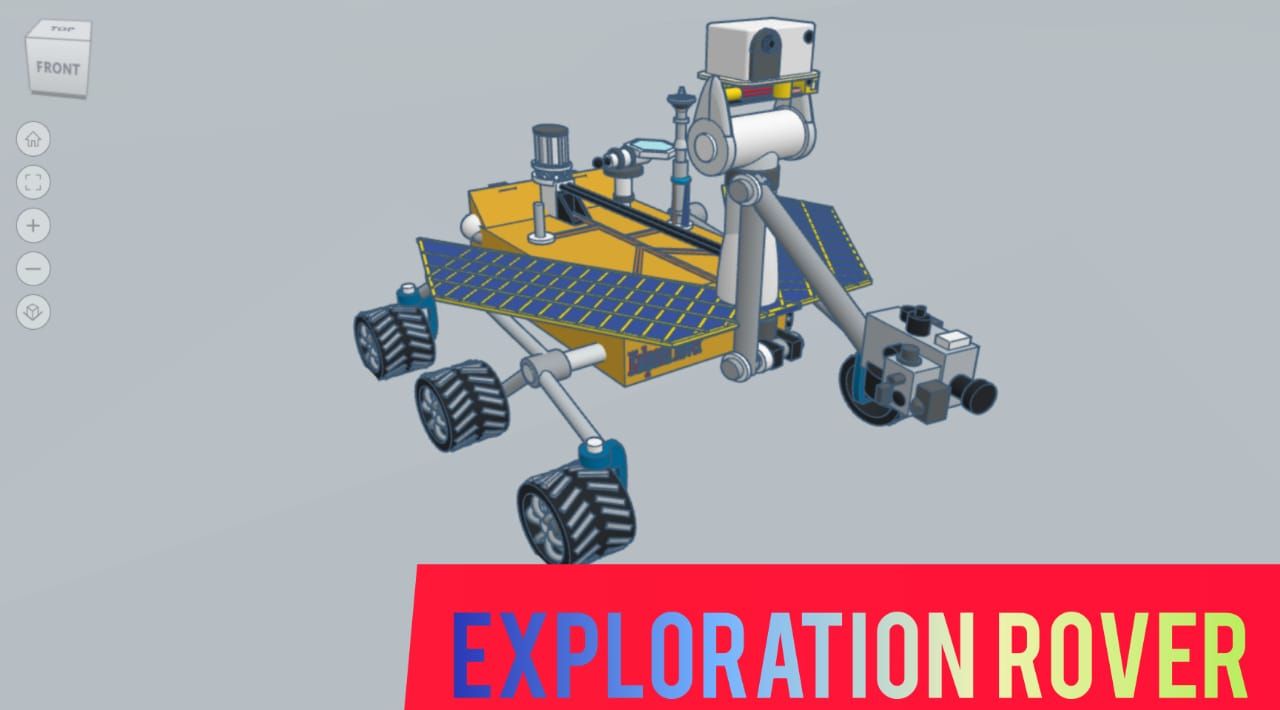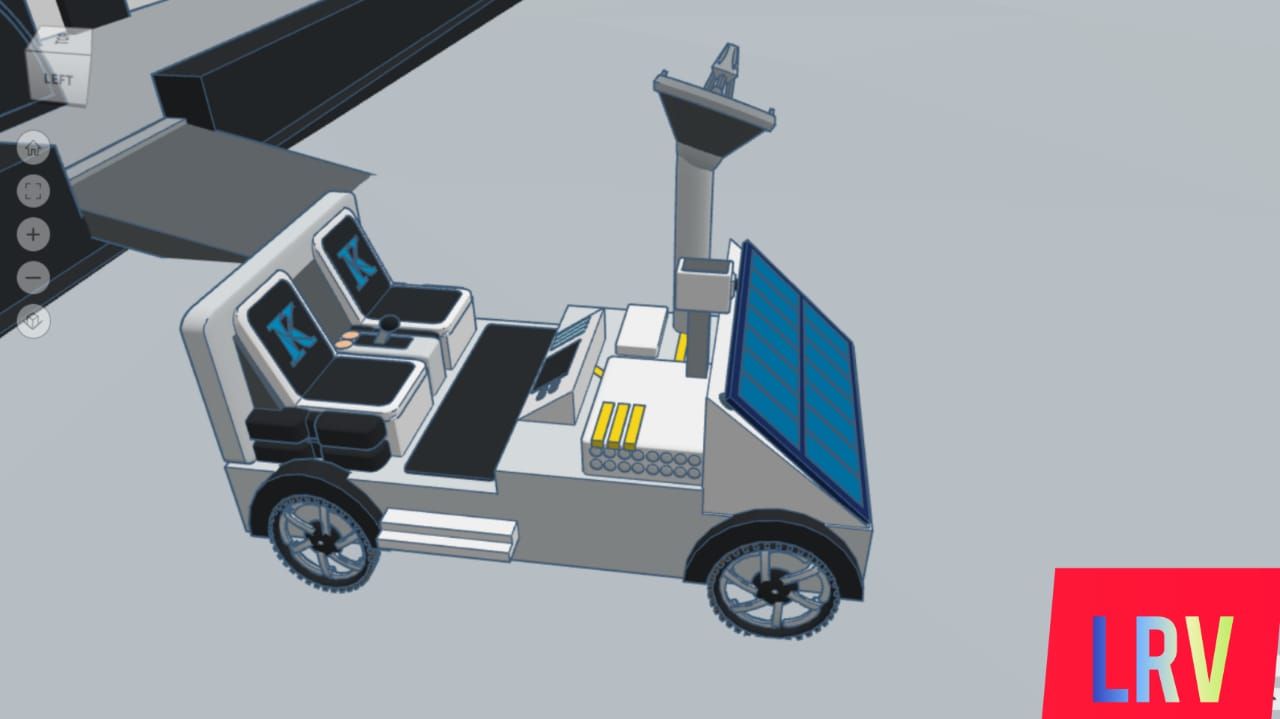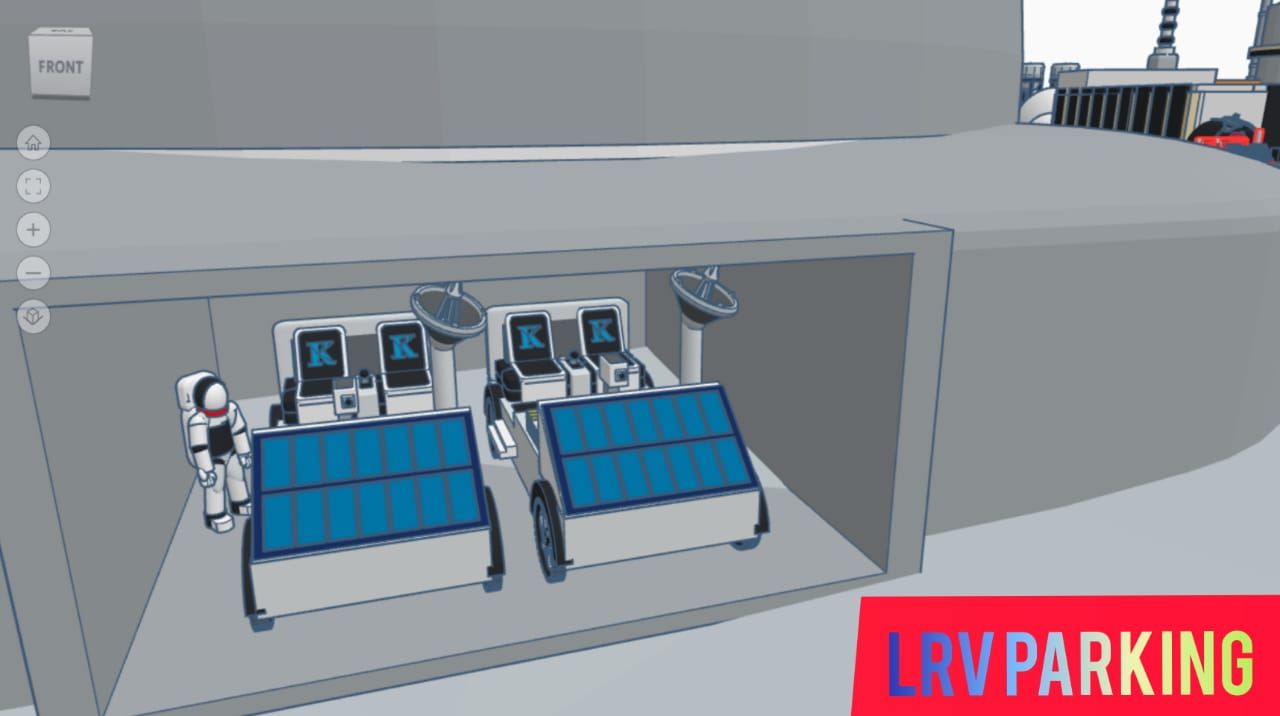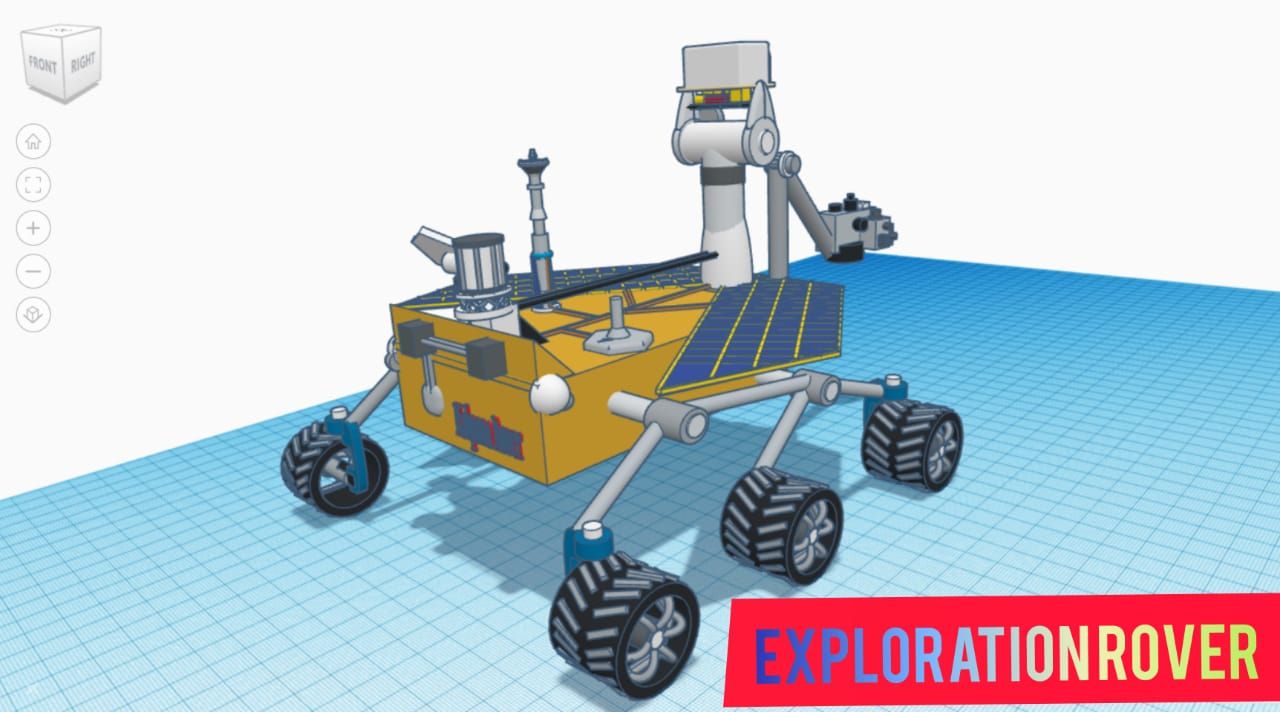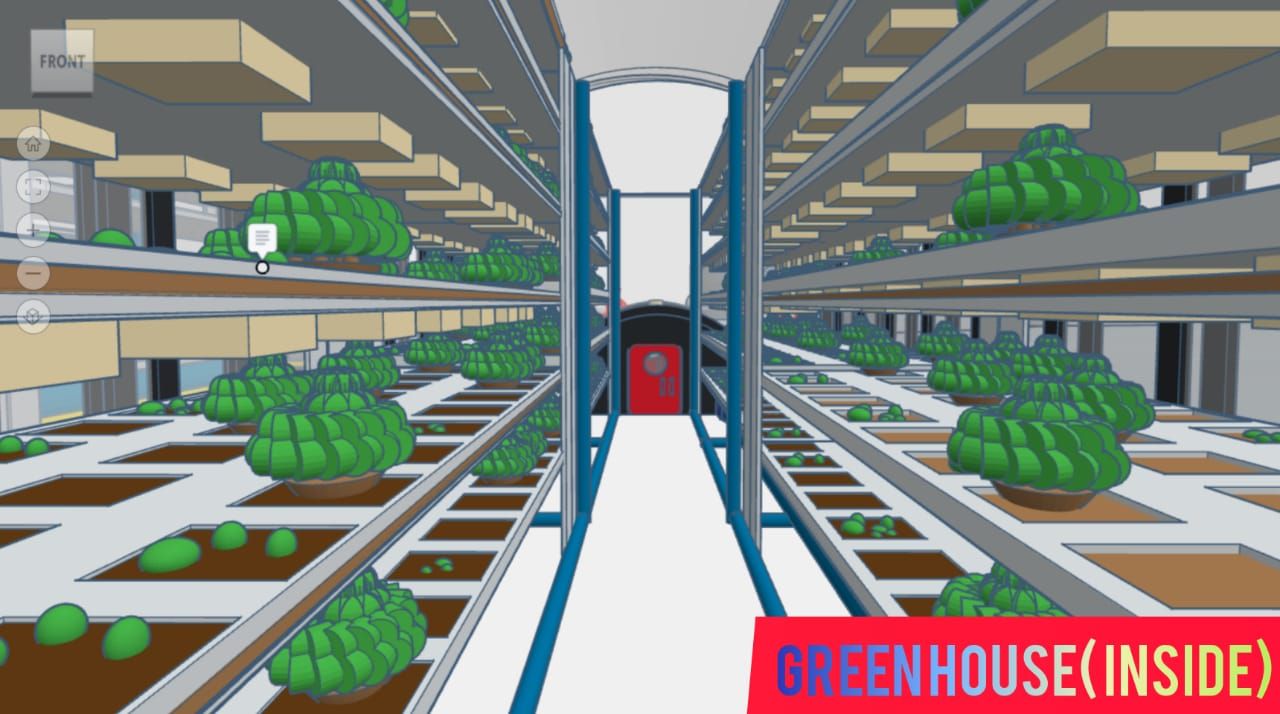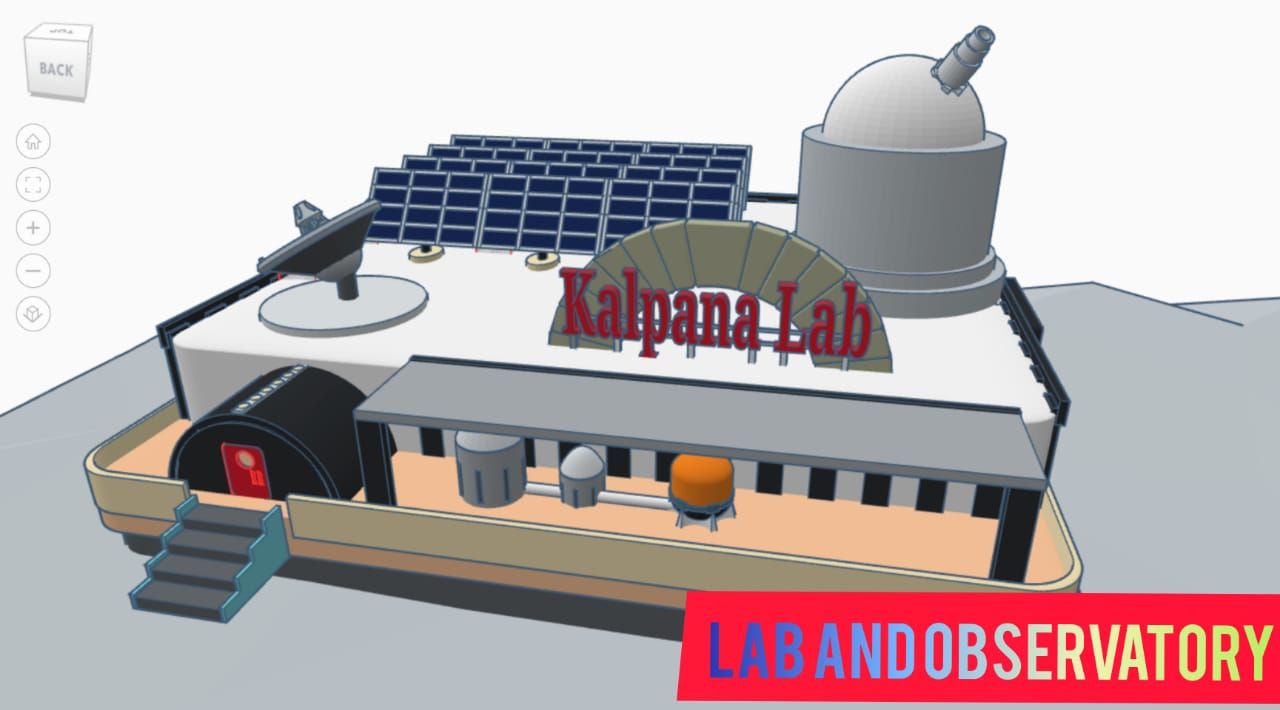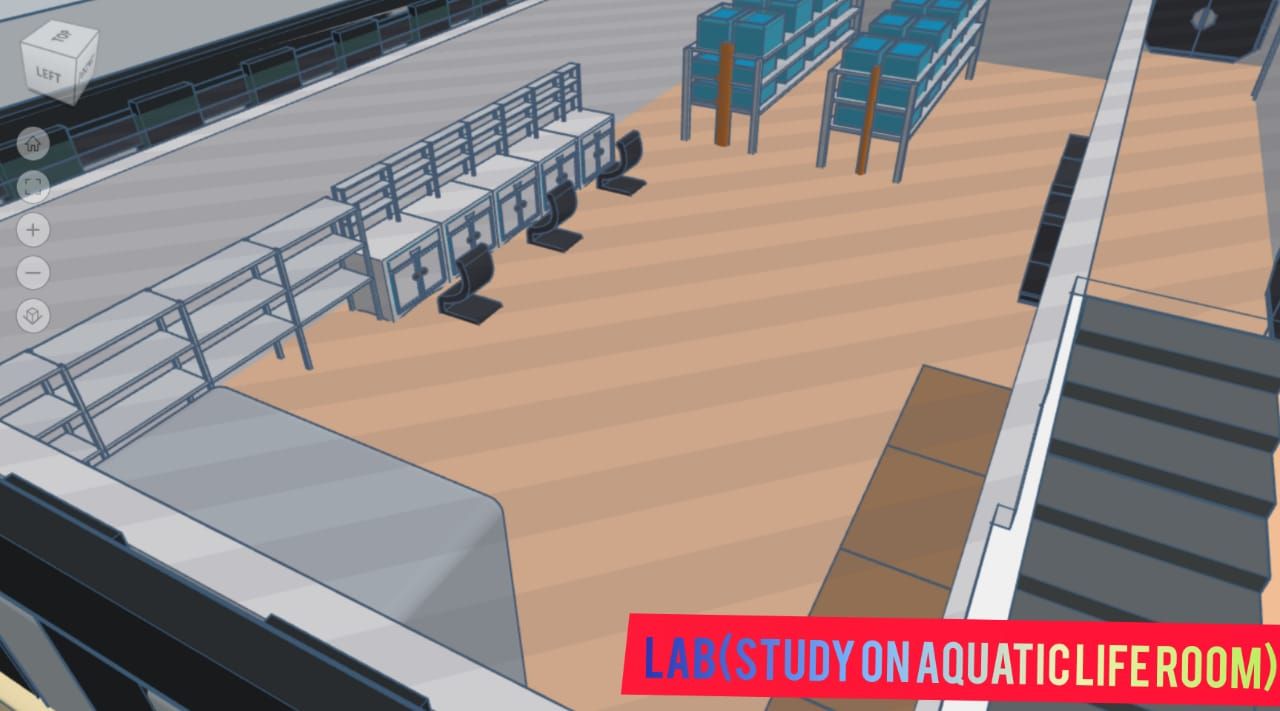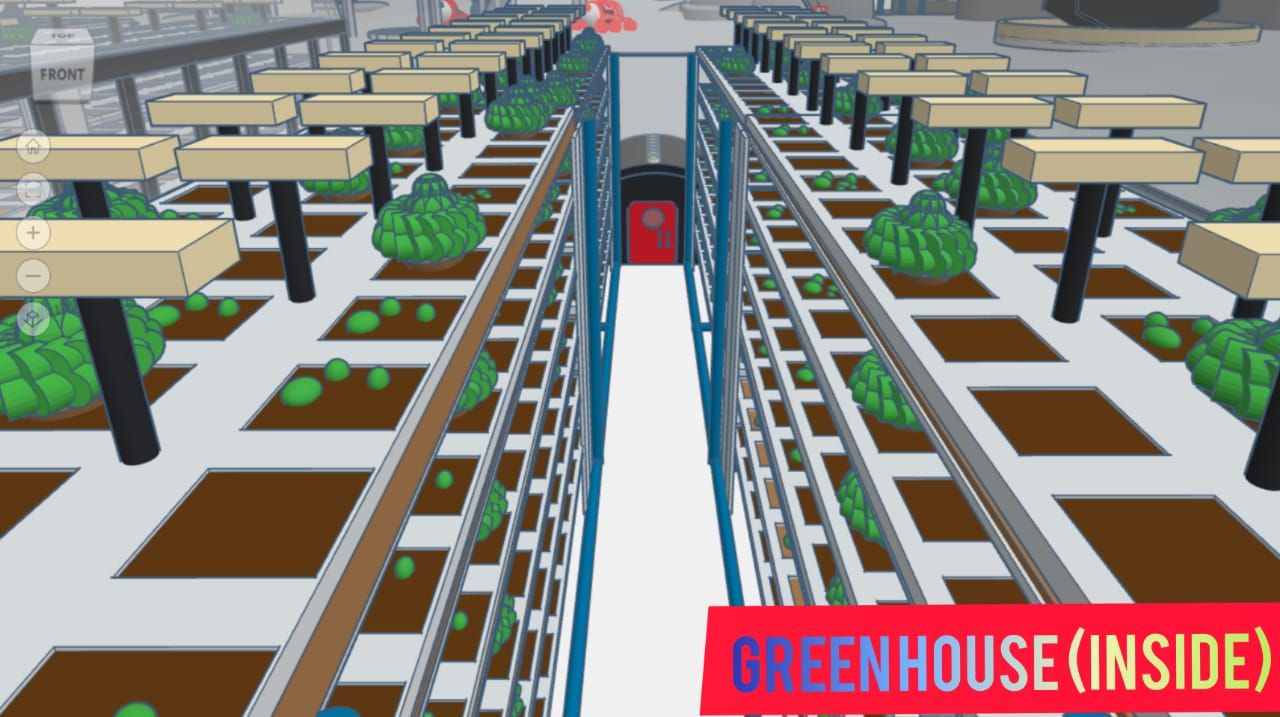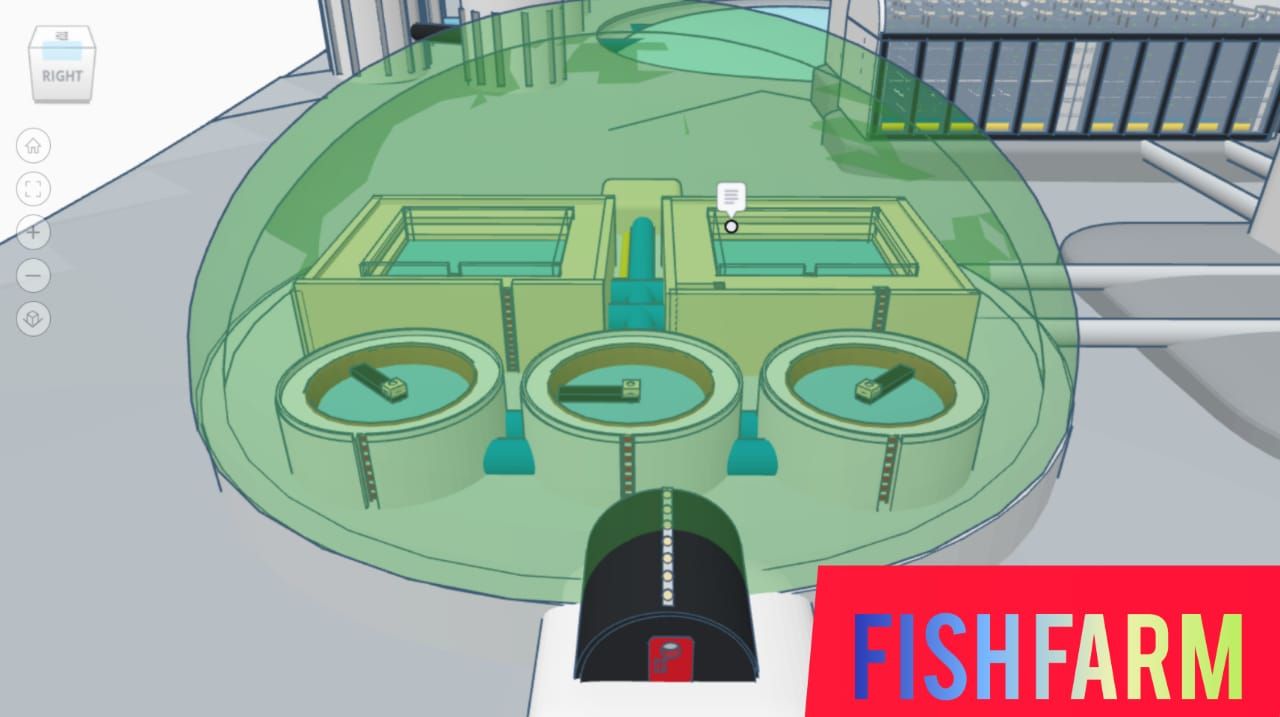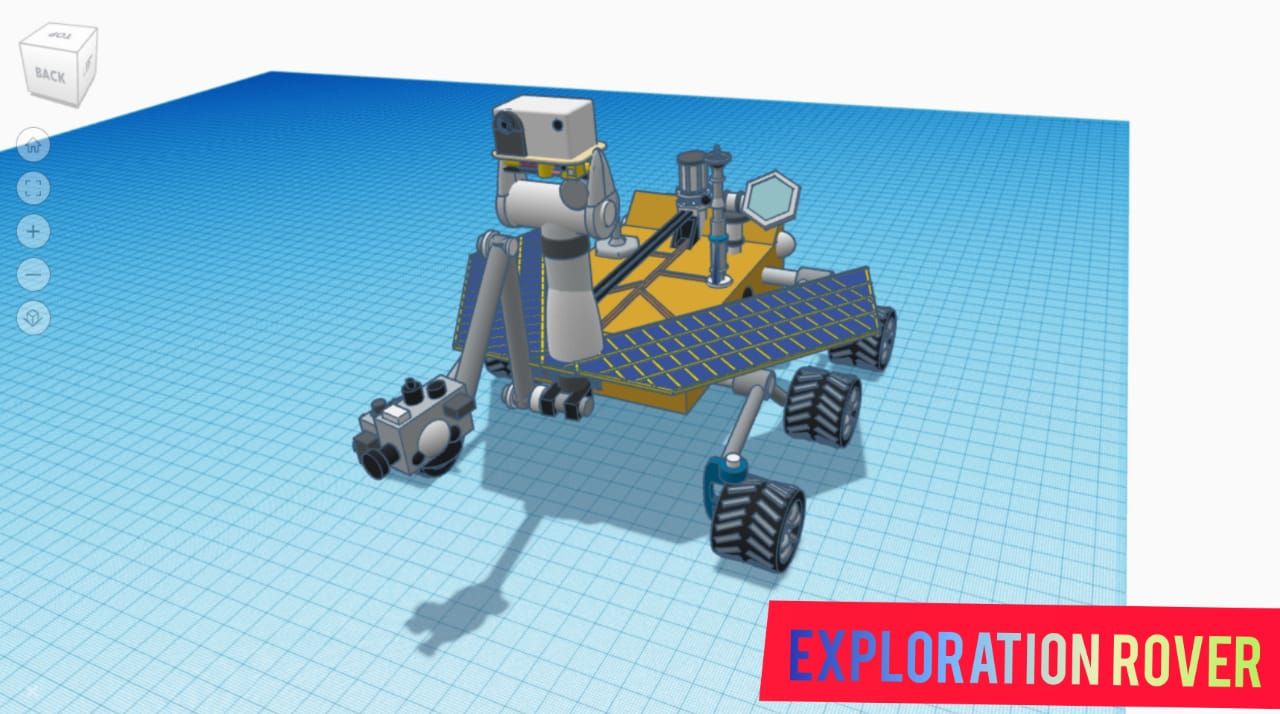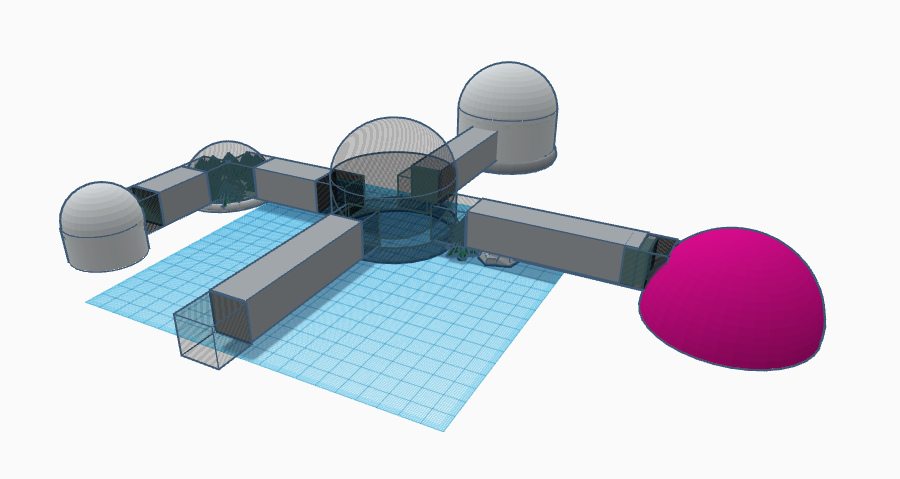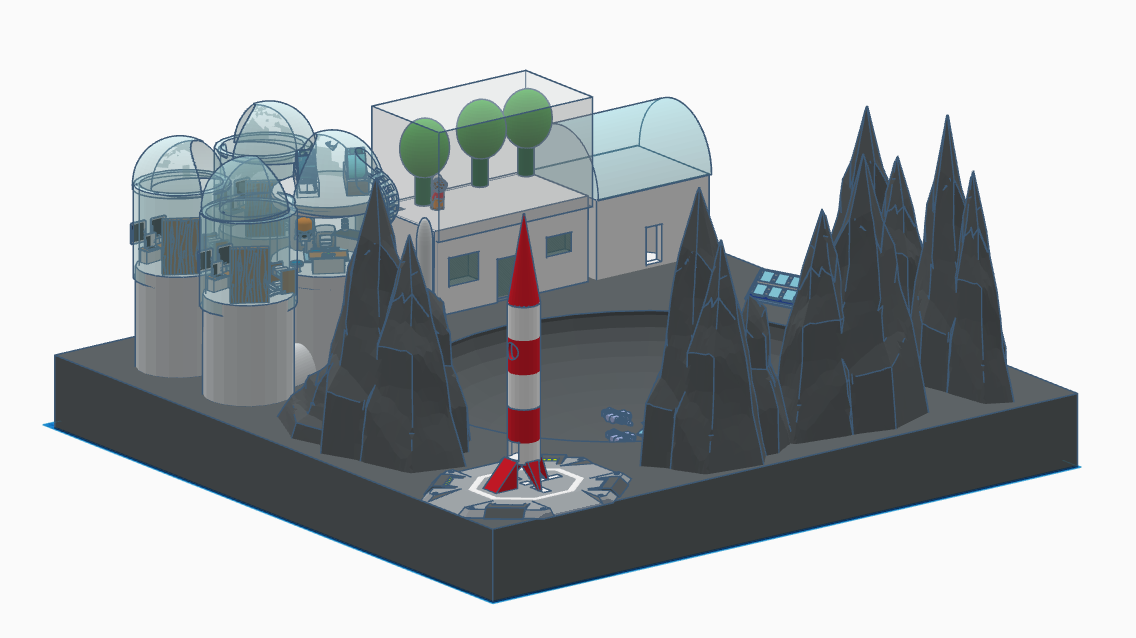Moon Camp Explorers Gallery 2021-2022
In Moon Camp Explorers each team’s mission is to 3D design a complete Moon Camp using Tinkercad. They also have to explain how they will use local resources, protect astronauts from the dangerous of space and describe the living and working facilities.
Team: Kalpana
Ashoka Universal School and Delhi Public School Nashik India 14, 12 2 / 0 Third Place – Non-ESA Member states
External link for 3d
|
Project description
Our Project is named “Kalpana 2. O”. In Hindi, Kalpana means Thought or imagination. We believe that this imagination we have will one day be a reality. Kalpana here also refers to respected Kalpana Chawla, the first Indian women astronaut to go to space, which sadly she never returned. “2. O” shows that this is our 2nd try in this competition, improving our ideas and rectifying our errors. Our project has 12 major buildings and the Gateway Space station. We have 5 types of rovers in the project The exploration rover, the Drilling and 3-D printing rover, the mining robot, the transportation robot(all unmanned), and the LRV. we also have some humanoid robots. |
||||
|
Where do you want to build your Moon Camp?
Shackleton crater Why did you choose this location?
Shackleton crater is located near the south pole, where due to its deepness there is a shadow area and the temperatures are not very extreme. There is also a large amount of water in form of ice on the crater. We chose to build our base near the top of the crater so we can also get sunlight for our solar panels and can generate clean renewable electricity. Also, we could get a good signal to communicate with the earth How do you plan to build your Mooncamp? Which materials will you use?
We have 3-D printing robots which will gather the Moon’s regolith, turn it into printing material and then 3-D print the buildings. The living quarters(or the main buildings) have a double-walled structure. the inner wall is inflatable like a balloon. The outer layer is 3-D printed to provide support and protection from the harmful environment. The airlock and windows which are made of Low-E glass to block radiation are in each building. Each building is white from the inside to reflect light. Other parts will be imported from the earth, which will mostly be made of recycled plastic waste. |
||||
|
Water
|
Food
|
Electricity
|
Air
|
Protection
|
|
We would set up our pumping stations near the source of water. The pumping station will melt the ice, filter it so it can be drinkable. Then the water will be sent to all buildings through the water-out pipeline(the main pipeline will have 4 smaller pipelines inside it: water out, water in, electricity, air). Then we will collect the wastewater (mostly urine) and bring it to our wastewater filter plant through water-in pipeline, where the wastewater will be cleaned. Then this cleaned water will again be sent to a pumping station, forming a cycle that will continue on and on. |
We have 2 greenhouses that will grow radishes, cress, and lettuce in a similar way to the veggie system on the ISS. They are fast-growing plants. The greenhouse’s glass wall is made of Low-E glass which blocks the radiation. The greenhouse will be at 55-70°F. We will also plant legumes plants with Cyanobacteria or Rhizobium to produce nitrogen. We also have a fish farm with fishes like sea bass and meager whose eggs will be sent from the earth. In the lab, we will also be creating meat by growing a single cell of an animal(eg: chicken) and farming on the moon’s regolith. |
Our primary source is a nuclear fission powerplant. We will be using helium-3 as 1) no dangerous waste products, and 2) is in abundance on the moon. The secondary source will be solar panels which will only be used when there is any problem with the powerplant. solar panels will be rotating to get maximum sunlight and will also be self-cleaning (using an electron-shower method). solar panels alone can’t produce enough electricity so, we will store the electricity produced when it was not in use and use that whenever we need it. The electricity will be supplied through electricity pipeline. |
We use the molten salt electrolysis method in which we will extract oxygen from the moon’s regolith. This oxygen will then be transported to the greenhouse to mix with other gases such as nitrogen and carbon dioxide to make breathable air, which will then be transported to the rest of the buildings of the base through pipelines (air pipeline inside the main pipeline). Nitrogen gas will come from the bacteria in the legumes plant’s root nodules and carbon dioxide for the breath of humans on the moon themselves. The greenhouse will also be producing oxygen but in small amounts. |
We have our outer 3-D printed wall of the living quarters made from lunar regolith which provides strong support and protection from harmful radiation as well as from small meteoroids. The windows of every building are made of Low-E glass which blocks the radiation. We will also keep track of any near moon asteroid or meteoroid which may hit the moon adding more security. The astronauts will have a spacesuit that will protect them from the harmful environment of the moon. We also have an emergency bunker if anything goes wrong. It will have supplies for astronauts for 6 months. |
|
Describe a day on the Moon for one of your Moon Camp astronauts
Here come the new astronauts to the moon. After landing on the moon, they first go to the storage room to keep the materials and parts they have brought. Then they get their beds in the living area, instructions and a timetable which is as follows for one of the astronauts:- THURSDAY 6 Wakeup |
||||


